UGREEN NASync vs UniFi UNAS – Which Should You Buy?
In the evolving landscape of network-attached storage, the arrival of UGREEN and UniFi (Ubiquiti) marks one of the more interesting shifts in consumer and prosumer data management over the last two years. Both brands, previously recognised for their strength in peripheral hardware and networking respectively, officially entered the NAS sector around late 2023 to early 2024, each taking distinct approaches to design, functionality, and ecosystem integration. UGREEN, following a successful crowdfunding launch in early 2024, built its NASync series around desktop and SSD-based solutions for home, creative, and prosumer users seeking all-in-one local storage, virtualization, and multimedia platforms. Its portfolio now includes systems ranging from the ARM-based DXP2800 to the Intel-powered DXP8800 Plus, offering performance tiers from modest home use to compact workstation-class environments.
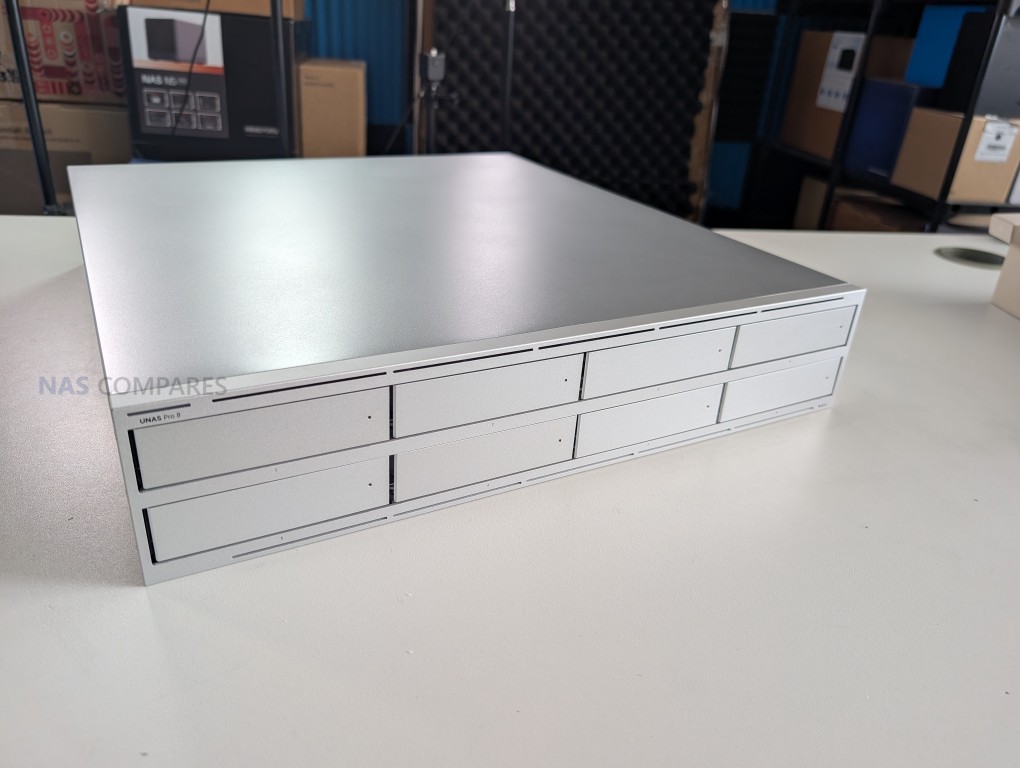
Meanwhile, UniFi, a brand with a long history in professional networking and surveillance infrastructure, released its UNAS family within the same timeframe, targeting users already invested in its ecosystem of routers, cameras, and switches. The UNAS lineup now spans from the compact UNAS 2 and UNAS 4 desktop units to the rackmount UNAS Pro 4 and Pro 8 systems, with each designed for straightforward deployment and remote integration within the UniFi Network and Protect platforms. Despite arriving from very different sectors, both companies have effectively lowered the cost of entry to reliable NAS storage while redefining how integrated ecosystems can extend storage functionality. This comparison explores their respective design choices, hardware capabilities, software environments, and operational scope to assess which platform is best suited to different user scenarios in 2025 and 2026.
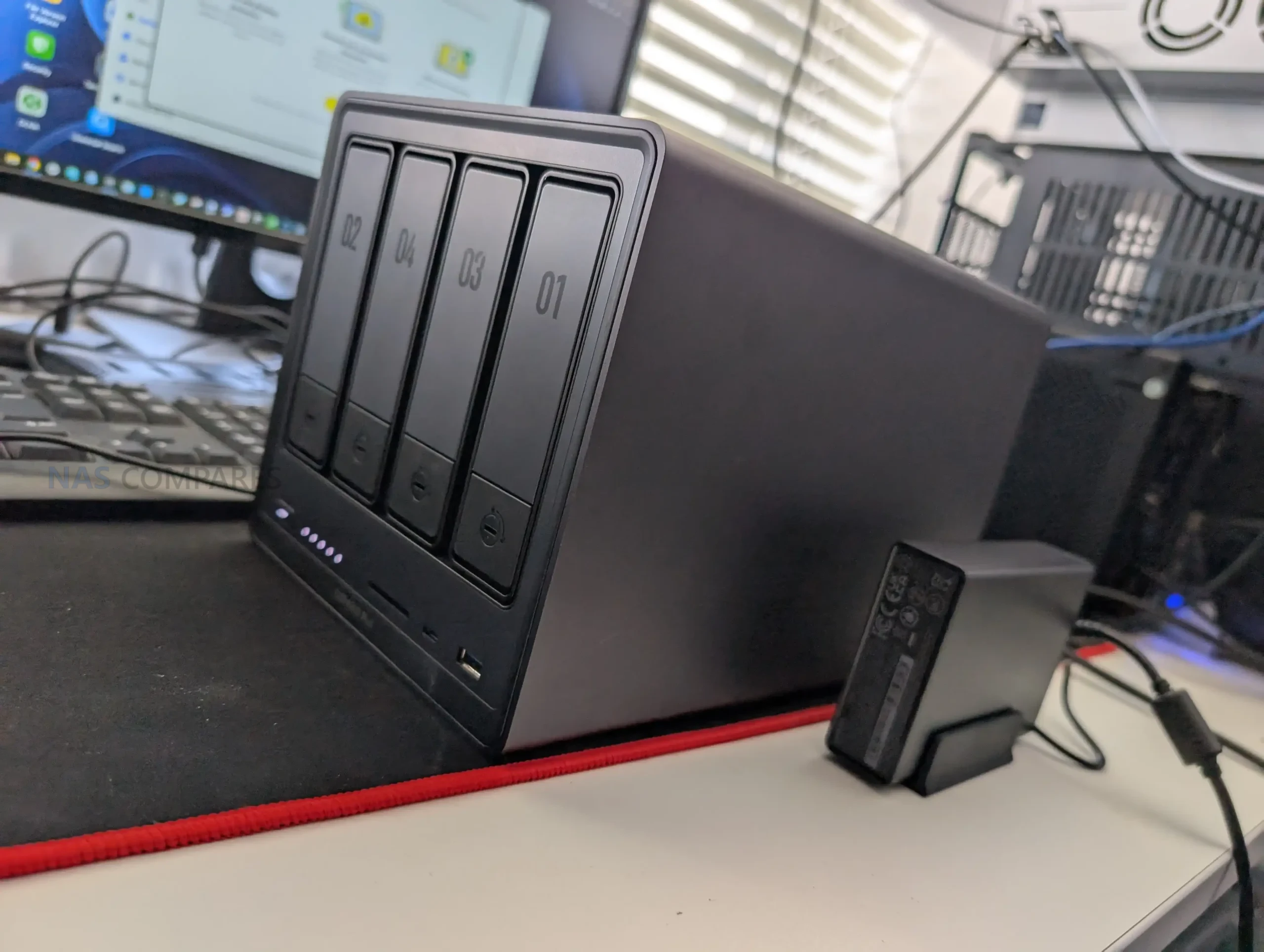
UniFi vs UGREEN NAS – The TL;DR
In comparing the UniFi and UGREEN NAS platforms, it becomes clear that each brand represents a different vision of what modern network storage should be. UniFi’s UNAS series builds on the company’s heritage in networking and surveillance, delivering a range of efficient, ARM-powered NAS systems that integrate tightly within the UniFi ecosystem. Models such as the UNAS 2, UNAS 4, UNAS Pro 4, and UNAS Pro 8 prioritize reliability, centralized management, and long-term stability rather than raw compute power or expandability. Their hardware is deliberately fixed—non-upgradable memory, ARM Cortex-A55 or A57 CPUs, and limited caching support for NVMe drives—but balanced by advanced network connectivity, including dual 10G SFP+ ports, PoE+++ power options, and redundant power supplies. UniFi’s storage OS focuses on core NAS fundamentals: multiple RAID levels, snapshots, encryption, and secure remote access via the UniFi controller. It is intentionally simple, relying on integration with other UniFi products for extended functionality such as surveillance and automation. In contrast, UGREEN’s NASync line follows an open, performance-driven approach designed for flexibility and standalone capability.
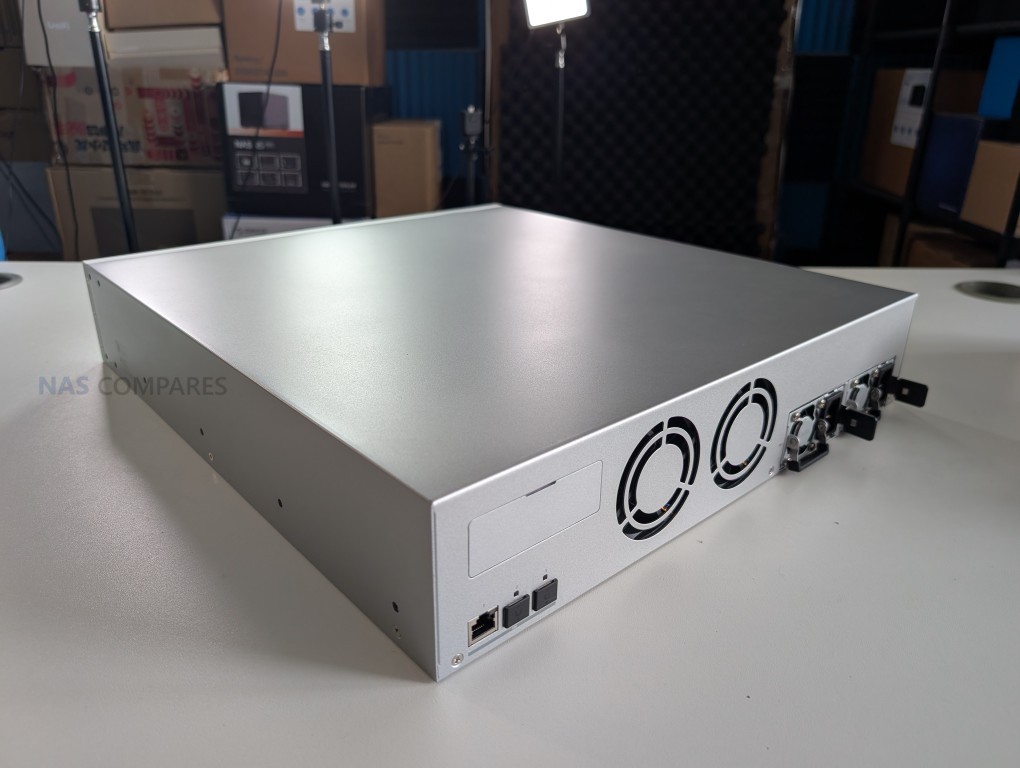 |
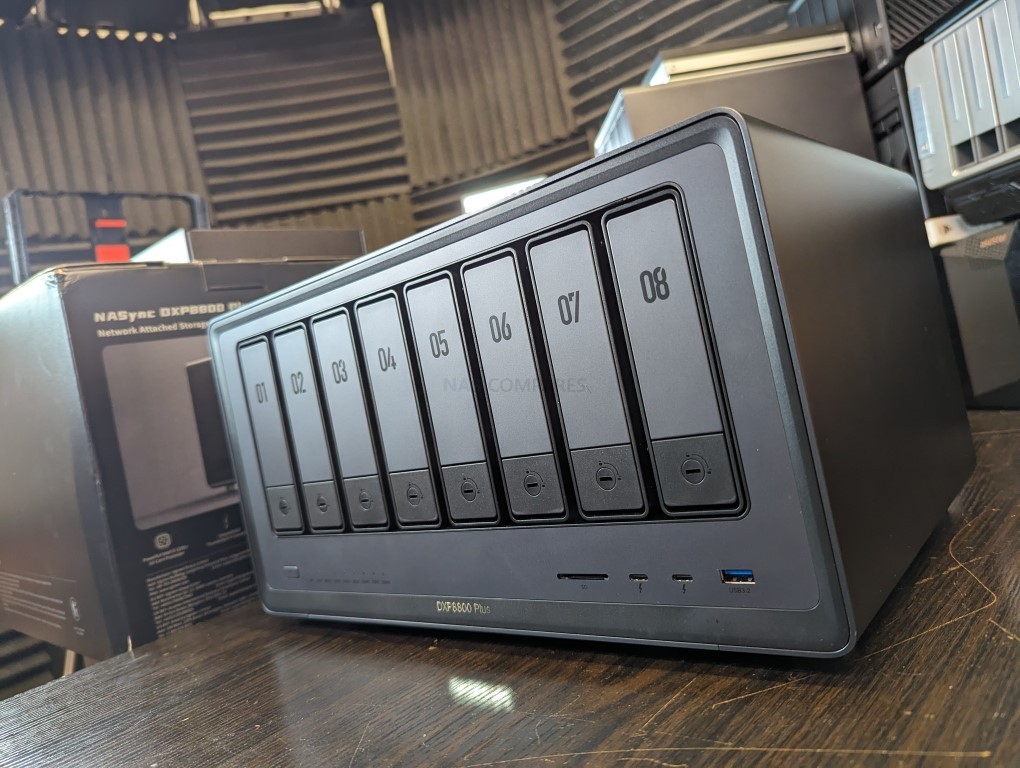 |
Ranging from the DXP2800 with its 8-core ARM processor to the flagship DXP8800 Plus powered by Intel’s i5-1240P, these systems cover every segment from entry-level home use to prosumer and light enterprise workloads. UGREEN’s hardware offers user-upgradable DDR4/DDR5 memory, PCIe expansion, NVMe storage pooling, and multi-gig connectivity, with higher-end models adding dual 10GbE, Thunderbolt 4, and even GPU compatibility. Its UGOS Pro operating system transforms the NAS into a hybrid server capable of running Docker containers, virtual machines, and AI-based indexing, alongside comprehensive backup and synchronization tools across cloud and local environments. While UniFi emphasizes simplicity, low maintenance, and enterprise-grade network reliability, UGREEN delivers a richer feature set and greater hardware freedom at the expense of long-term enterprise validation. In essence, UniFi NAS suits users already invested in UniFi’s ecosystem who value cohesion, predictable performance, and integrated security, whereas UGREEN NAS appeals to those seeking raw performance, versatility, and independent control without ecosystem constraints.
UniFi vs UGREEN NAS – Design, Storage and Range
When comparing UGREEN and UniFi’s NAS portfolios, the first and most visible difference lies in how each brand approaches system design and deployment environment. UGREEN’s NASync series is focused entirely on desktop enclosures, reflecting the brand’s consumer electronics background and intent to cater primarily to home users, prosumers, and creative professionals. Each model, such as the DXP2800, DXP4800 Plus, and DXP8800 Plus, follows a compact, upright chassis layout with attention to quiet cooling and minimal footprint. The aesthetic is consistent across the range—metallic finishes, clear drive bay accessibility, and understated branding—intended to fit easily on a desk or in a studio environment. By contrast, UniFi’s UNAS range adopts both desktop and rackmount designs, depending on model class. The UNAS 2 and UNAS 4 are designed for smaller workspaces and integrate PoE+++ power options to simplify installation, while the UNAS Pro 4 (1U) and UNAS Pro 8 (2U) are full rackmount systems made from SGCC steel, reflecting their professional and data-center-friendly construction standards.
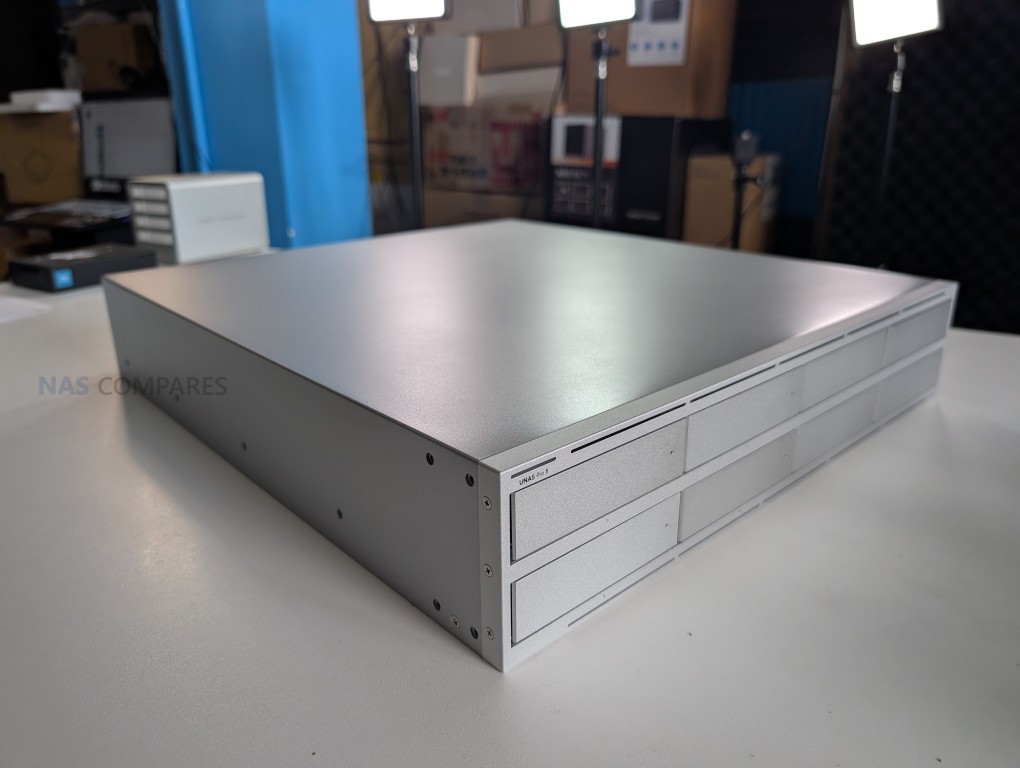 |
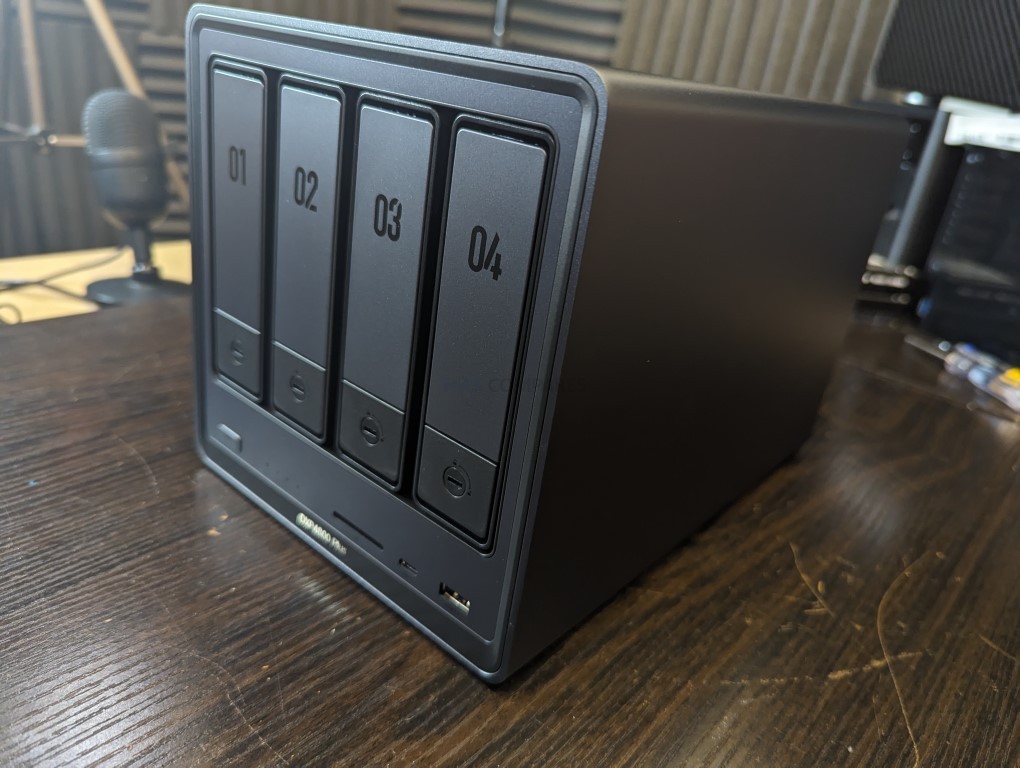 |
UGREEN’s systems emphasize flexibility and user-level expandability within their desktop footprint. Most models in the NASync line support 2.5-inch or 3.5-inch SATA drives, dual NVMe SSD slots, and optional PCIe or Thunderbolt expansion, allowing them to function as both storage servers and active editing platforms. The DXP480T Plus, for example, is an all-SSD NAS with four M.2 NVMe bays that appeals to users seeking maximum I/O performance for tasks such as 4K video editing or database caching. The DXP8800 Plus, the flagship, extends this design language with eight SATA bays, dual Gen 4 M.2 SSD slots, dual 10 GbE networking, and Thunderbolt 4 connectivity, making it one of the most powerful turnkey NAS options in the consumer space. In comparison, UniFi’s UNAS systems prioritize structural consistency and network integration over expandability. Even though all models provide dual or single NVMe slots, these are limited to caching duties. Drive capacity across the lineup scales more linearly, from two to eight 3.5-inch bays, maintaining a clear size-to-performance progression while focusing on rack density and cooling efficiency.
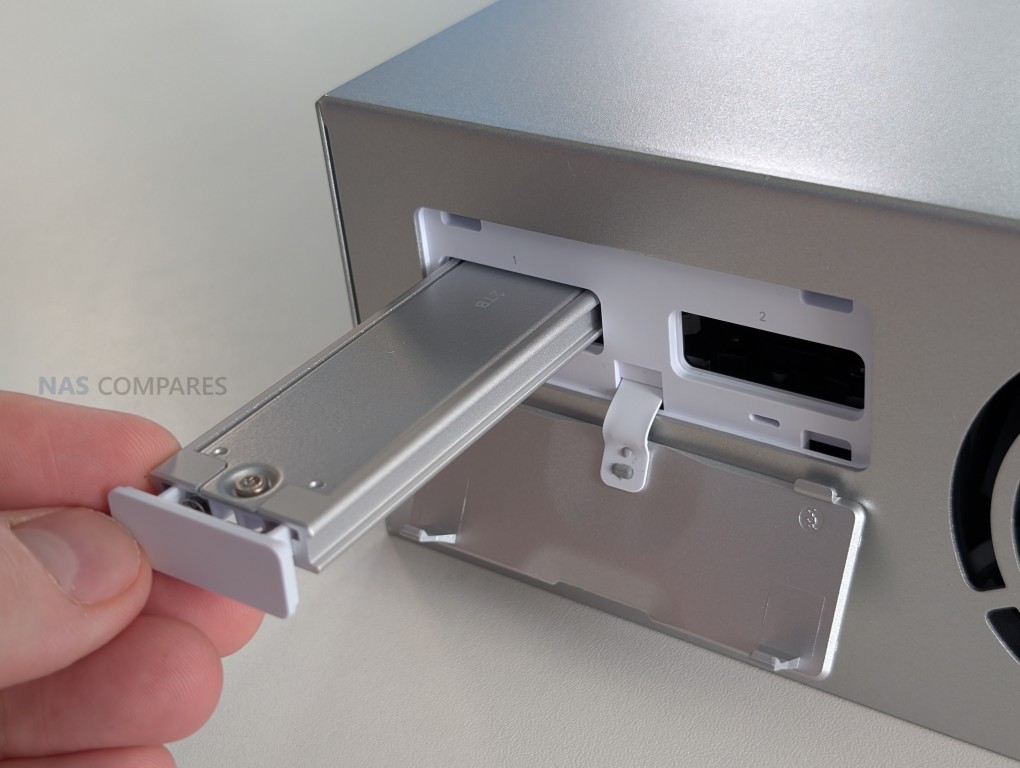 |
 |
From a usability perspective, UGREEN’s design philosophy focuses on standalone versatility. Each NASync model is built to function independently as a complete storage and application host, with optional integration through standard network protocols. Physical accessibility is a clear design consideration, with quick-release trays, front USB ports, and in some models, SD card readers for direct media offload. The visual and acoustic design is optimized for open environments, with whisper-quiet fan systems and smart temperature management, making them suitable for use beside workstations or in living spaces. UniFi’s design philosophy, however, centers on infrastructure harmony rather than isolation. The rackmount models are designed to slide directly into existing UniFi network installations, using standard 1U or 2U spacing and consistent power integration with UniFi’s USP-RPS redundant supply network. Even the desktop UNAS 4 maintains visual continuity with UniFi routers and switches, using similar matte finishes, front-facing status LEDs, and clean ventilation lines.
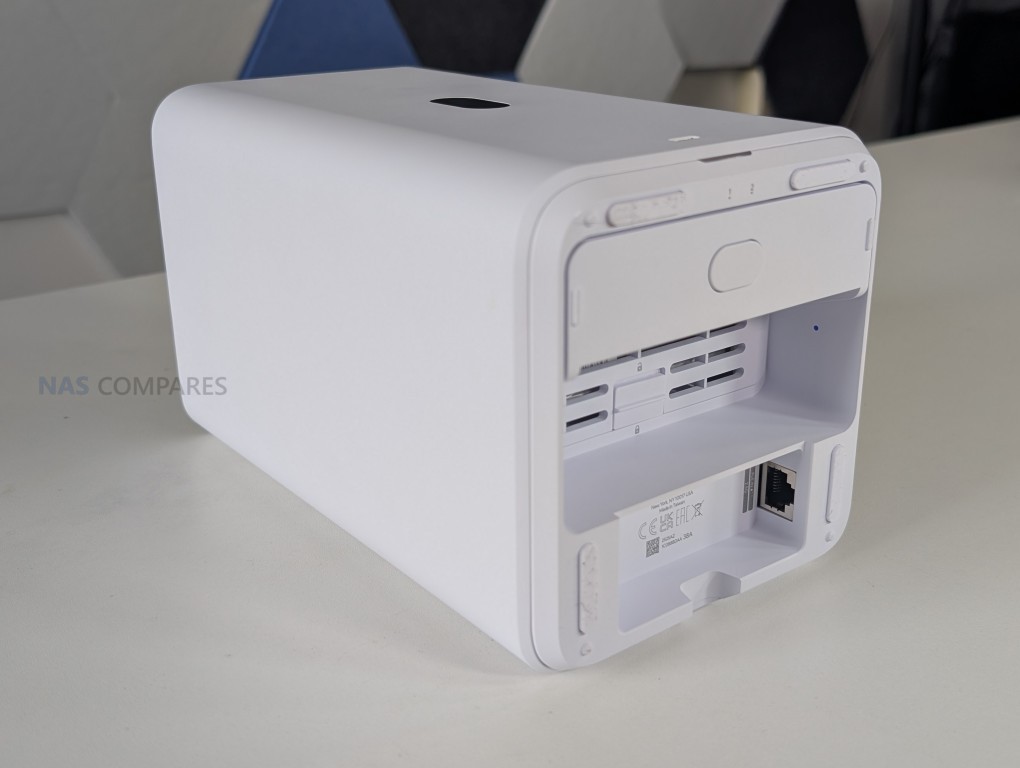 |
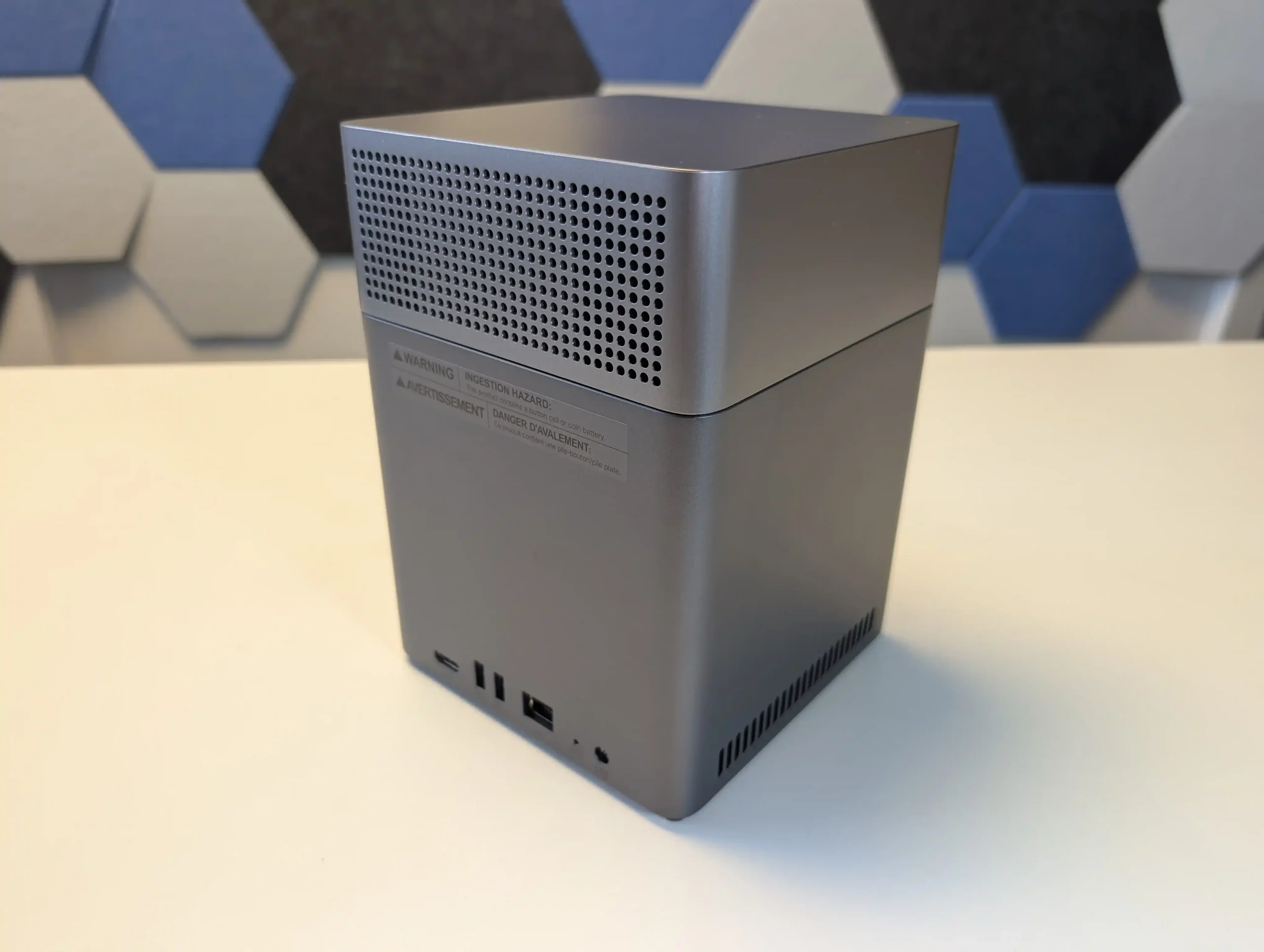 |
In terms of product range, UGREEN currently offers at least seven NASync models, each targeting a specific performance segment. These include the DXP2800 (2-bay ARM), DXP4800 (4-bay N100), DXP4800 Plus (4-bay N305), DXP6800 Pro (6-bay N305), DXP480T Plus (SSD-only, N305), DH4300 Plus (4-bay ARM), and DXP8800 Plus (8-bay i5-1240P). Each generation introduces more advanced CPUs, faster interfaces, and expanded media capabilities. UniFi’s current UNAS range, while smaller, has diversified rapidly since its launch. The confirmed models include the UNAS 2, UNAS 4, UNAS Pro 4, UNAS Pro 8, and the earlier UNAS Pro 7-Bay, all of which use ARM-based processors and fixed memory configurations. A larger ENAS 16-Bay ZFS system is already in development, targeting enterprise and datacenter deployments in 2026. Compared with UGREEN’s more gradual tiered approach, UniFi’s product scaling is defined by form factor and network bandwidth rather than by CPU class or user workload.
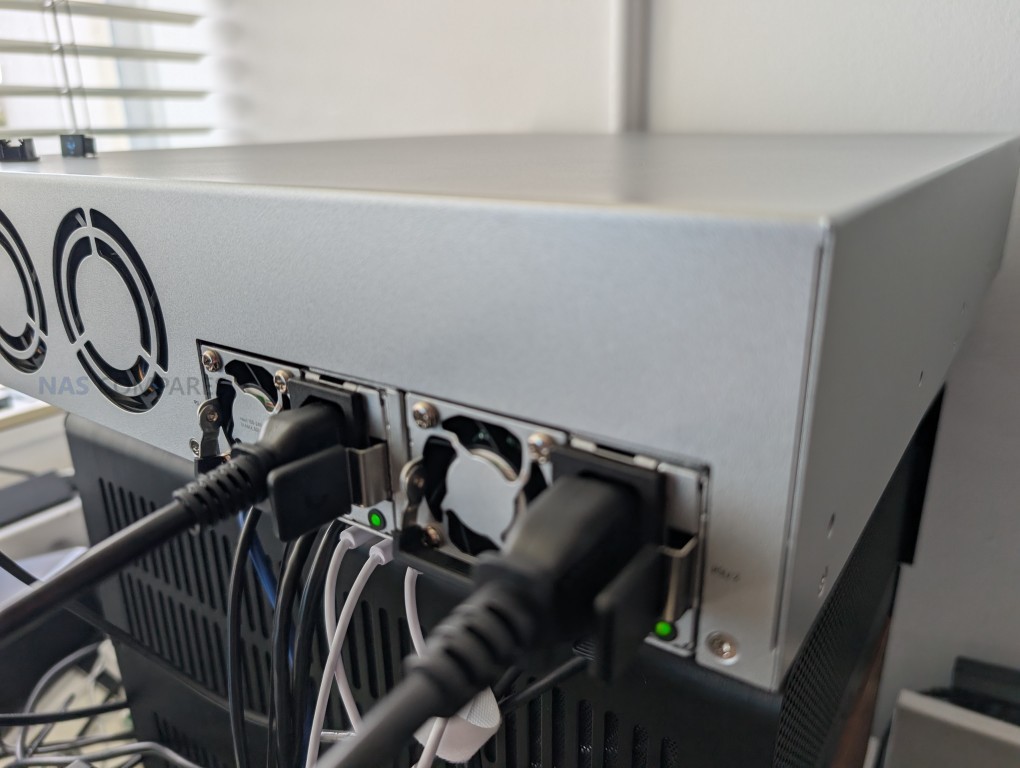 |
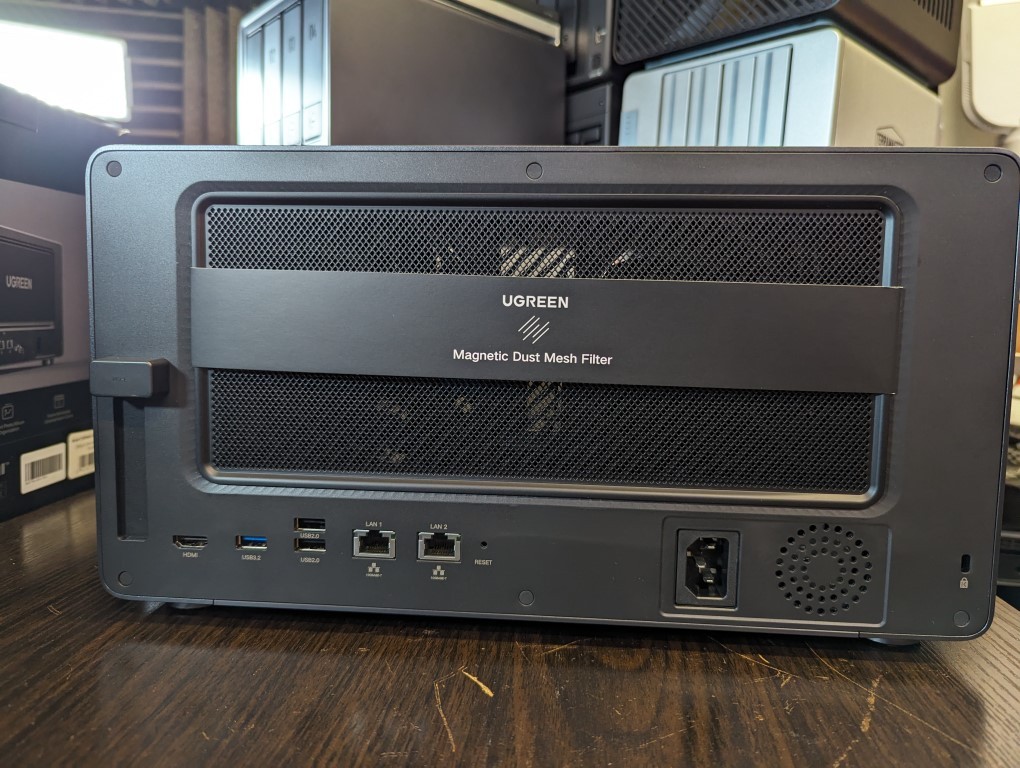 |
Price segmentation further highlights their opposing strategies. UniFi’s UNAS line is priced aggressively to attract users into its broader ecosystem, starting at $199 for the UNAS 2, rising to $799 for the Pro 8, and including mid-tier models like the UNAS 4 ($379) and Pro 4 ($499). The pricing aligns with UniFi’s established model of offering capable hardware at low margins to encourage ecosystem investment across switches, cameras, and controllers. UGREEN, by contrast, positions its NASync devices as feature-rich all-rounders, with prices reflecting performance class: from $279 for the DXP2800 to around $1,299 for the DXP8800 Plus. The difference in pricing structure is significant but reflects how each company defines value—UniFi through integrated ecosystem scaling, and UGREEN through standalone hardware strength and included functionality.
| Brand | Model Range | Form Factor | Drive Bays | NVMe Slots | Networking | Power Design | Typical Price Range |
|---|---|---|---|---|---|---|---|
| UniFi (Ubiquiti) | UNAS 2, UNAS 4, UNAS Pro 4, UNAS Pro 8, UNAS Pro 7-Bay | Desktop / Rackmount (1U–2U) | 2 – 8 × 3.5″/2.5″ | 2 × M.2 (cache only) | Up to 3 × 10 GbE (SFP+ + RJ45) | Internal + RPS / Dual hot-swap PSU | $199 – $799 |
| UGREEN NASync | DXP2800, DXP4800(+), DXP6800 Pro, DXP480T Plus, DH4300 Plus, DXP8800 Plus | Desktop only | 2 – 8 × 3.5″/2.5″ + SSD variants | 2 × M.2 (cache + storage) | 2.5 GbE / 10 GbE / TB4 / USB 4 | External or internal PSU |
UniFi vs UGREEN NAS – Hardware Range
The internal hardware philosophy of UniFi and UGREEN reflects two distinct interpretations of what a modern NAS should prioritize: efficiency and integration versus performance and versatility. UniFi’s UNAS series relies entirely on ARM-based architecture, a deliberate decision aligned with the company’s emphasis on low power consumption, predictable thermal characteristics, and embedded system reliability. Every model in the current UNAS lineup, including the UNAS 2, UNAS 4, UNAS Pro 4, and UNAS Pro 8, is built around a quad-core ARM processor—the A55 at 1.7 GHz for the smaller systems and the A57 at 2.0 GHz for the rackmount models. These CPUs deliver modest compute performance but strong stability and power efficiency, allowing for sustained 24/7 operation without requiring active thermal management beyond standard fan arrays. This design philosophy mirrors UniFi’s broader network device ecosystem, where embedded ARM SoCs dominate routers, gateways, and cameras, ensuring unified firmware management and hardware compatibility across all product categories.
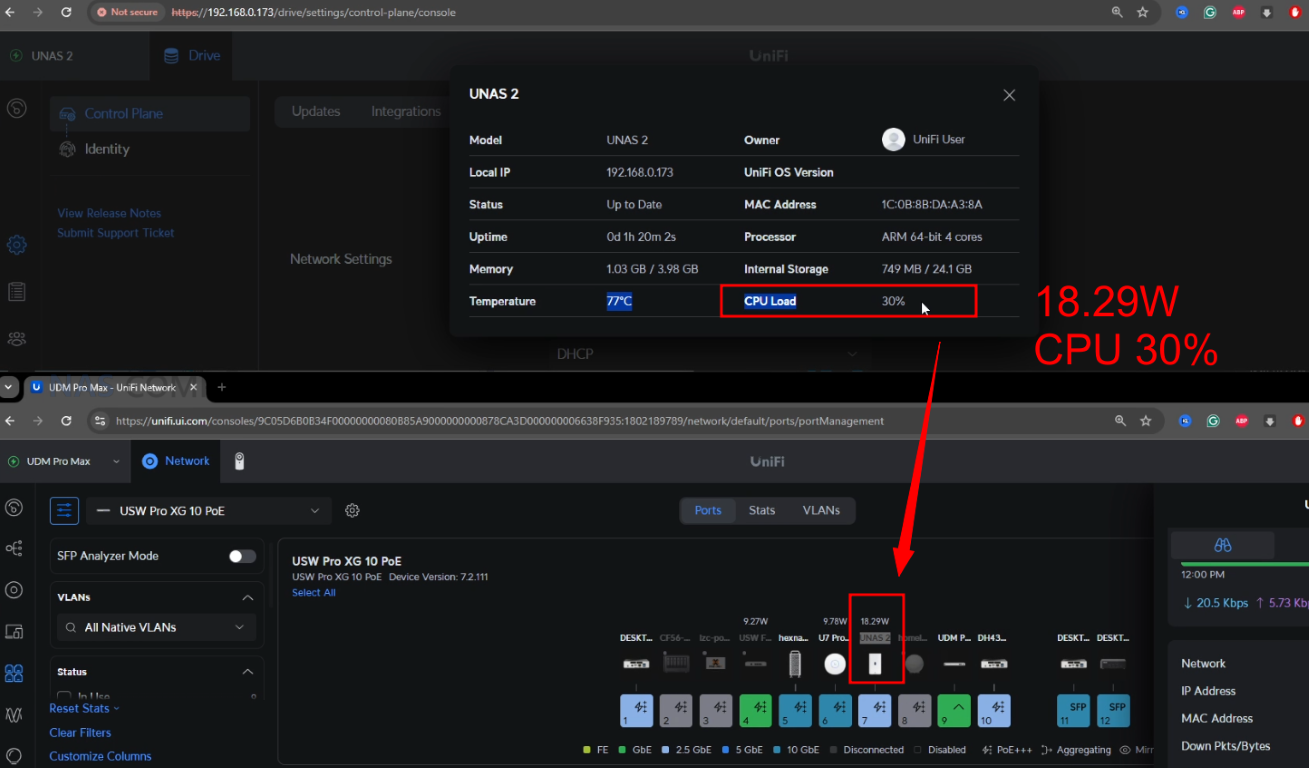 |
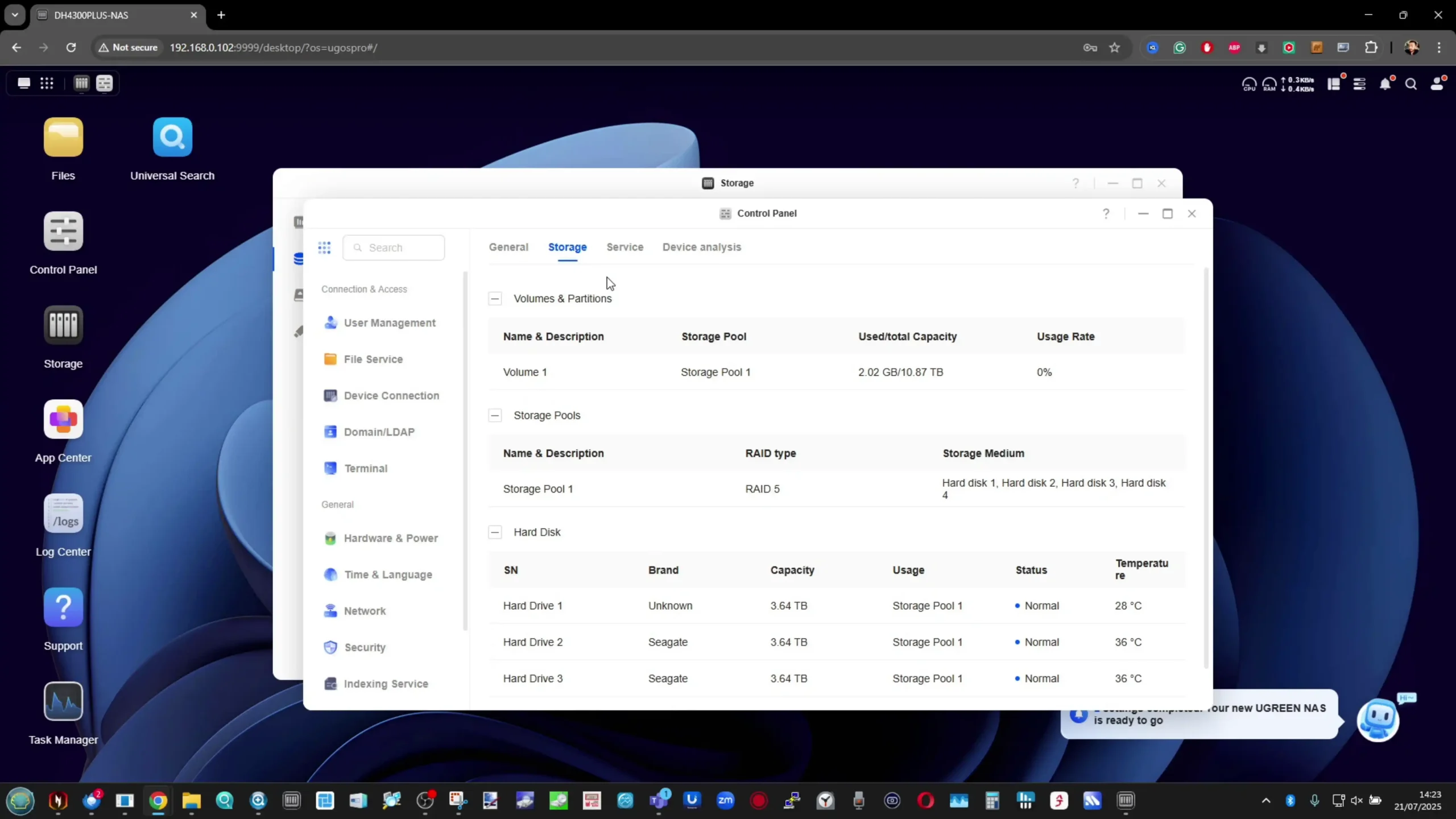 |
UGREEN’s NASync architecture takes the opposite route, aiming to deliver workstation-grade power in compact form factors. The entry-level DXP2800 features an octa-core ARM CPU, already outpacing UniFi’s top models in raw processing capability, while the remainder of the series transitions to x86 platforms from Intel’s latest low-power and mid-tier lines. The DXP4800 uses Intel’s N100 processor, the DXP4800 Plus and DXP6800 Pro adopt the more capable N305 with improved iGPU performance, and the flagship DXP8800 Plus integrates the 12th Gen Intel Core i5-1240P, offering hybrid performance and support for hardware transcoding, virtualization, and PCIe Gen 4 NVMe. This variation in processor choice underlines UGREEN’s strategy of providing scalable compute resources for different workloads, from basic backup operations to multi-user virtualization and AI-assisted indexing. Unlike UniFi, UGREEN’s systems can operate as full Linux servers, running multiple containers or virtual machines without external dependencies.
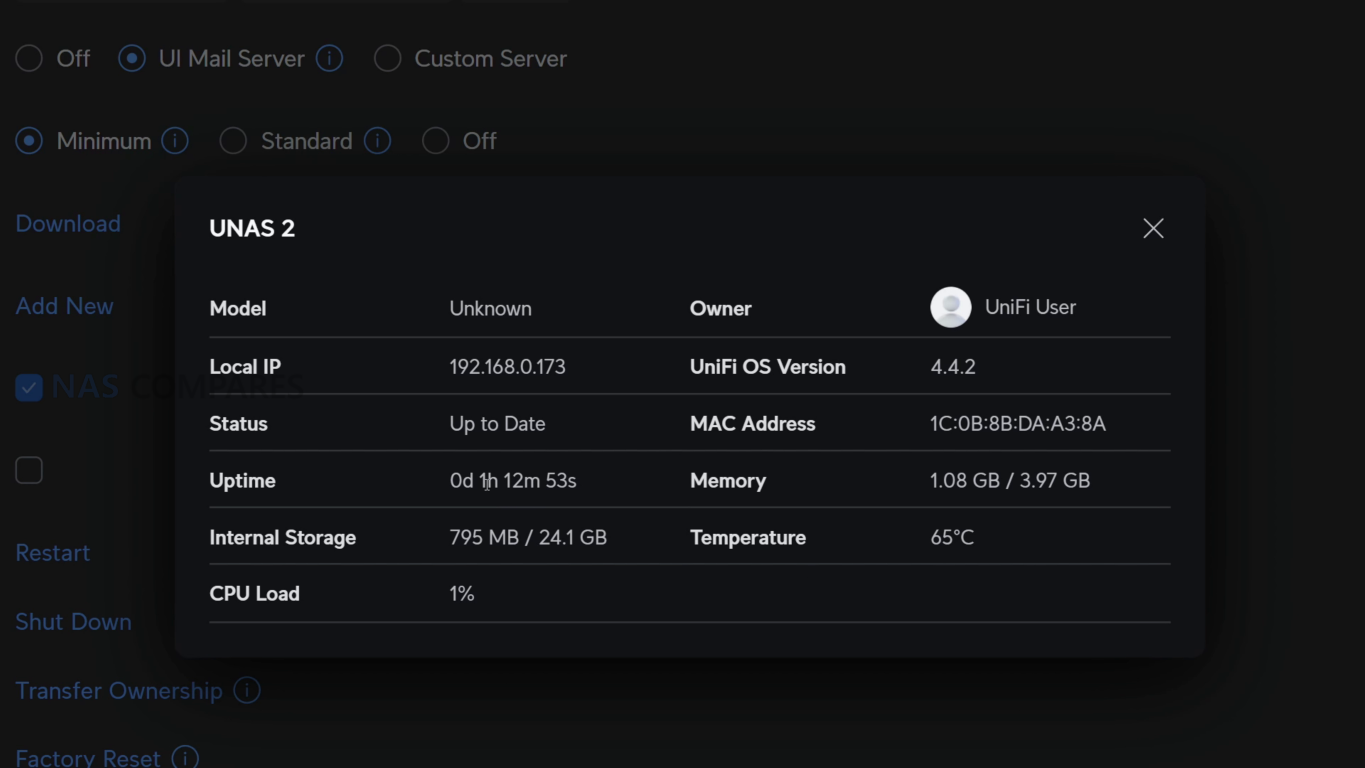 |
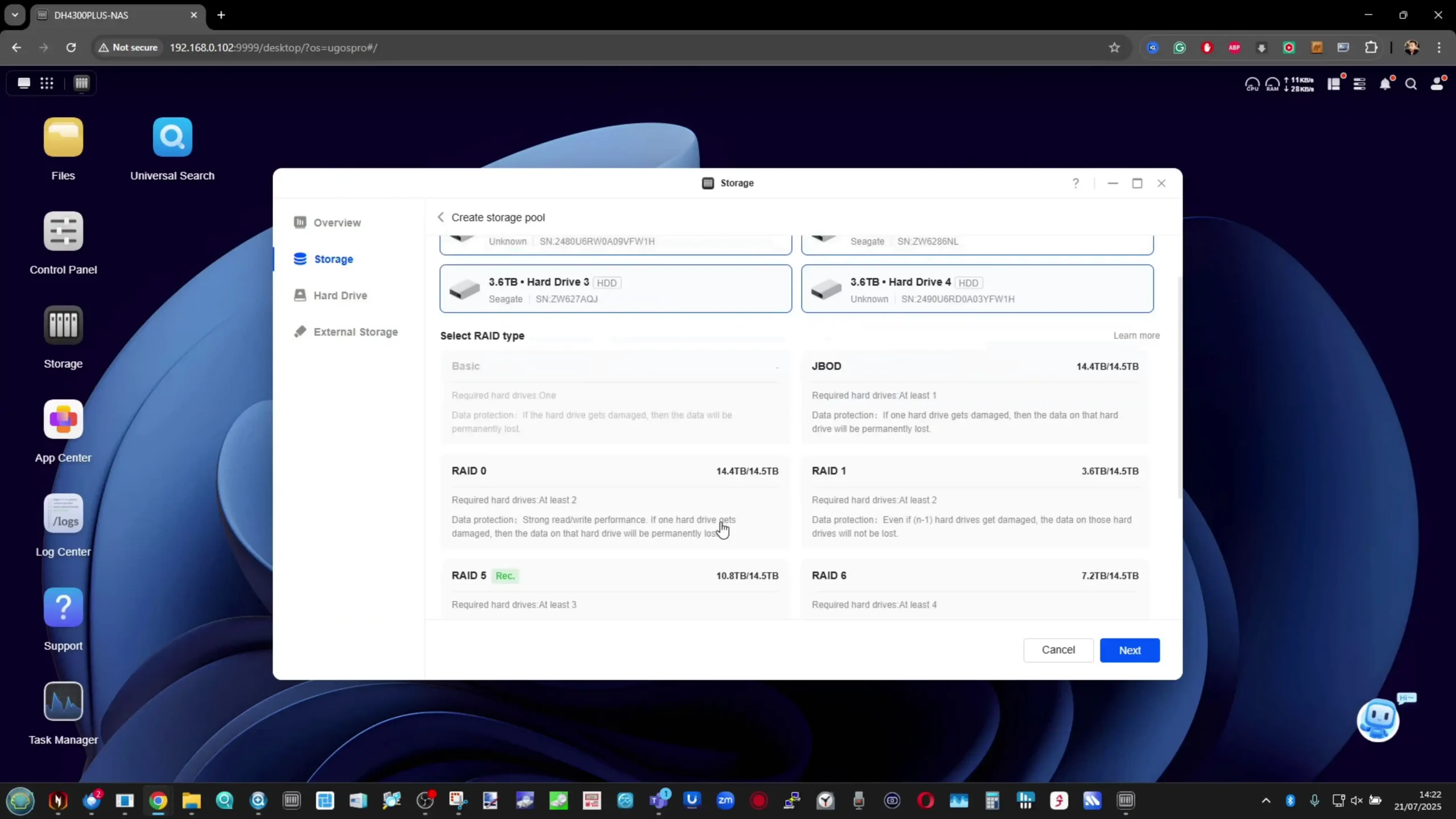 |
Memory and expansion options further highlight the divergence in hardware scope. UniFi’s systems employ fixed memory configurations—ranging from 4 GB on the UNAS 2 and 4 to 16 GB on the Pro 8—with no user-accessible upgrade paths. This aligns with their embedded design approach, where firmware optimization and unified memory management are prioritized over modularity. In contrast, UGREEN’s NASync devices all support user-upgradable SO-DIMM DDR4 or DDR5 modules, typically allowing capacities between 8 GB and 64 GB, depending on the model. This flexibility benefits users running memory-intensive services such as Docker containers, Plex transcoding, or AI indexing. Moreover, many of UGREEN’s x86 systems support PCIe expansion cards, offering pathways to add 10 GbE NICs, NVMe storage adapters, or GPU accelerators, while UniFi’s systems are intentionally non-upgradable to maintain uniform hardware control and firmware consistency across the UNAS ecosystem.
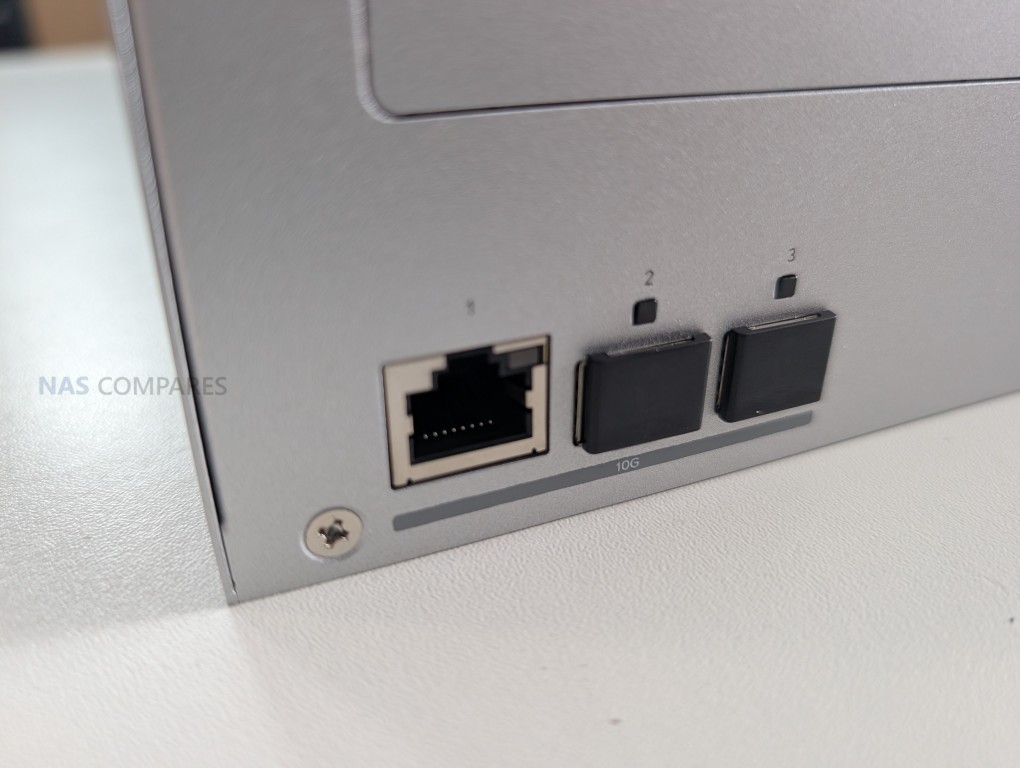 |
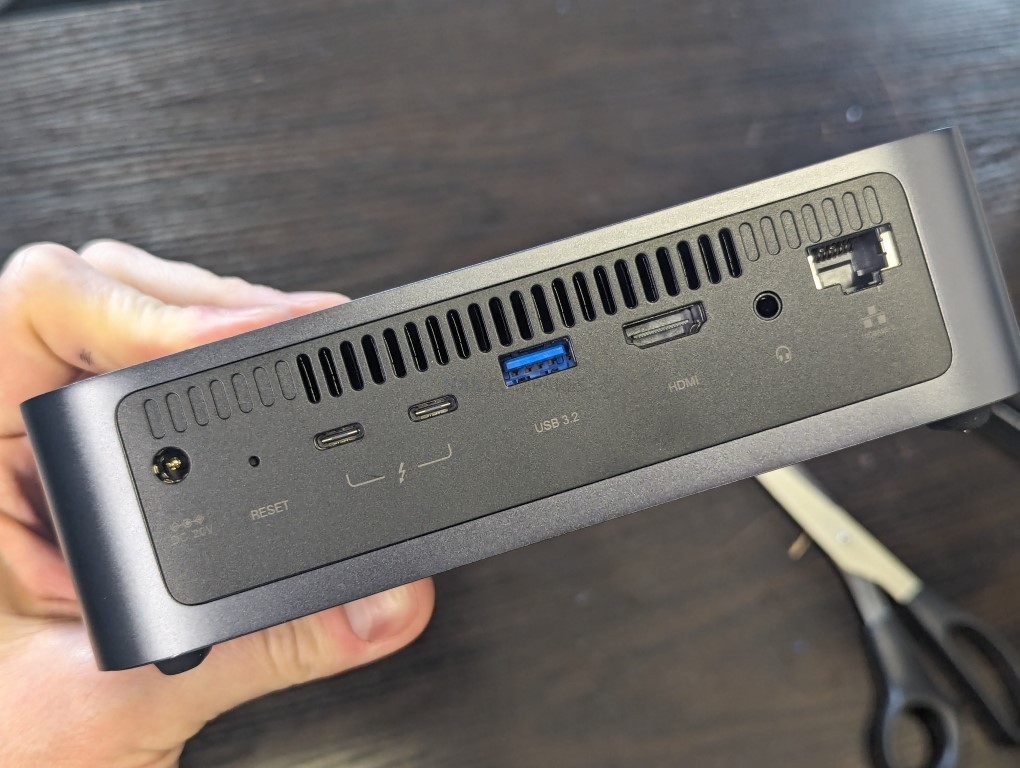 |
Networking and connectivity options serve as another key point of differentiation. UniFi has leaned on its networking pedigree, offering up to three 10 GbE connections (two SFP+ and one RJ45) on the UNAS Pro 8, with lower-tier models still providing 2.5 GbE or Gigabit connectivity. Power integration is also a hallmark of their design. The UNAS 2 and UNAS 4 use PoE+++, allowing single-cable deployment through UniFi switches, while the Pro series employs redundant power via USP-RPS or hot-swappable PSUs, reducing downtime in managed networks. UGREEN, on the other hand, focuses on local performance flexibility, providing multi-interface options like 10 GbE, 2.5 GbE, USB 4, and Thunderbolt 4, depending on model class. This allows their systems to double as direct-attached storage (DAS) for editors or content creators, particularly when used via Thunderbolt, an option not present in any UniFi NAS. Power designs in UGREEN systems are conventional but efficient, ranging from compact external adapters on smaller models to integrated supplies on higher-end devices.
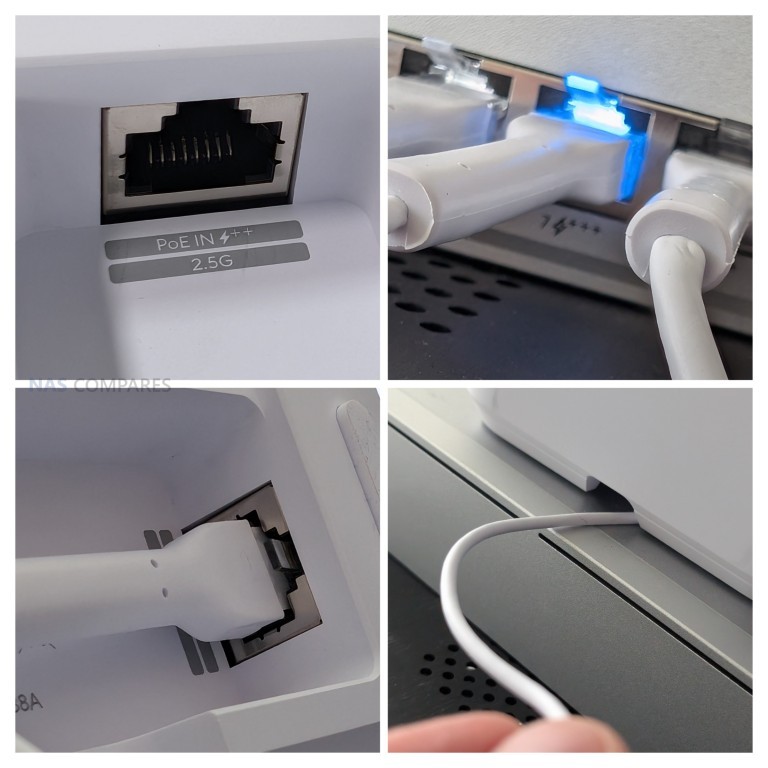 |
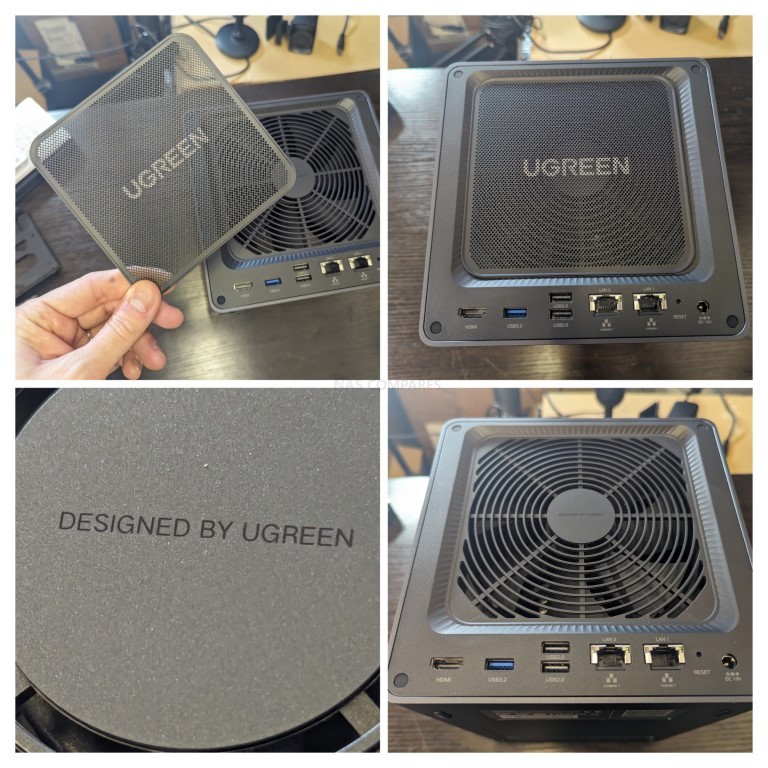 |
The overall hardware comparison reveals two clear user archetypes. UniFi’s hardware suits IT administrators and network professionals seeking dependable, uniform, low-maintenance appliances that integrate natively with UniFi controllers and services. UGREEN’s NASync hardware, meanwhile, targets prosumers, creative professionals, and small business users requiring computational headroom and direct system control. Where UniFi builds closed but predictable infrastructure devices, UGREEN delivers open and adaptable machines capable of serving as both NAS and lightweight servers. The contrast is not one of quality but of philosophy—UniFi favoring consistency and system management efficiency, UGREEN focusing on flexibility and computational breadth.
| Brand | Model | CPU Architecture | Memory | Upgrade Options | Networking | Expansion | Power Design |
|---|---|---|---|---|---|---|---|
| UniFi (Ubiquiti) | UNAS 2 / UNAS 4 | ARM Cortex-A55, 1.7 GHz (Quad-Core) | 4 GB | Non-upgradable | 1 × 2.5 GbE, PoE+++ | USB-C (5 Gbps) | PoE+++ or external PSU |
| UNAS Pro 4 | ARM Cortex-A57, 2.0 GHz (Quad-Core) | 8 GB | Non-upgradable | 2 × 10G SFP+, 1 × 1G RJ45 | None | Internal PSU + RPS support | |
| UNAS Pro 8 | ARM Cortex-A57, 2.0 GHz (Quad-Core) | 16 GB | Non-upgradable | 2 × 10G SFP+, 1 × 10G RJ45 | None | Dual hot-swap 550 W PSU | |
| UGREEN NASync | DXP2800 | ARM Octa-Core | 8 GB | Limited | 2.5 GbE | USB 3.2 | External PSU |
| DXP4800 / 4800 Plus | Intel N100 / N305 | 8–16 GB (up to 64 GB) | Yes | 2.5 GbE / 10 GbE | PCIe Gen 3 | Internal PSU | |
| DXP6800 Pro | Intel N305 | 16 GB (expandable) | Yes | Dual 10 GbE | PCIe Gen 3 | Internal PSU | |
| DXP8800 Plus | Intel Core i5-1240P | 16–64 GB | Yes | Dual 10 GbE + Thunderbolt 4 | PCIe Gen 4 | Internal PSU |
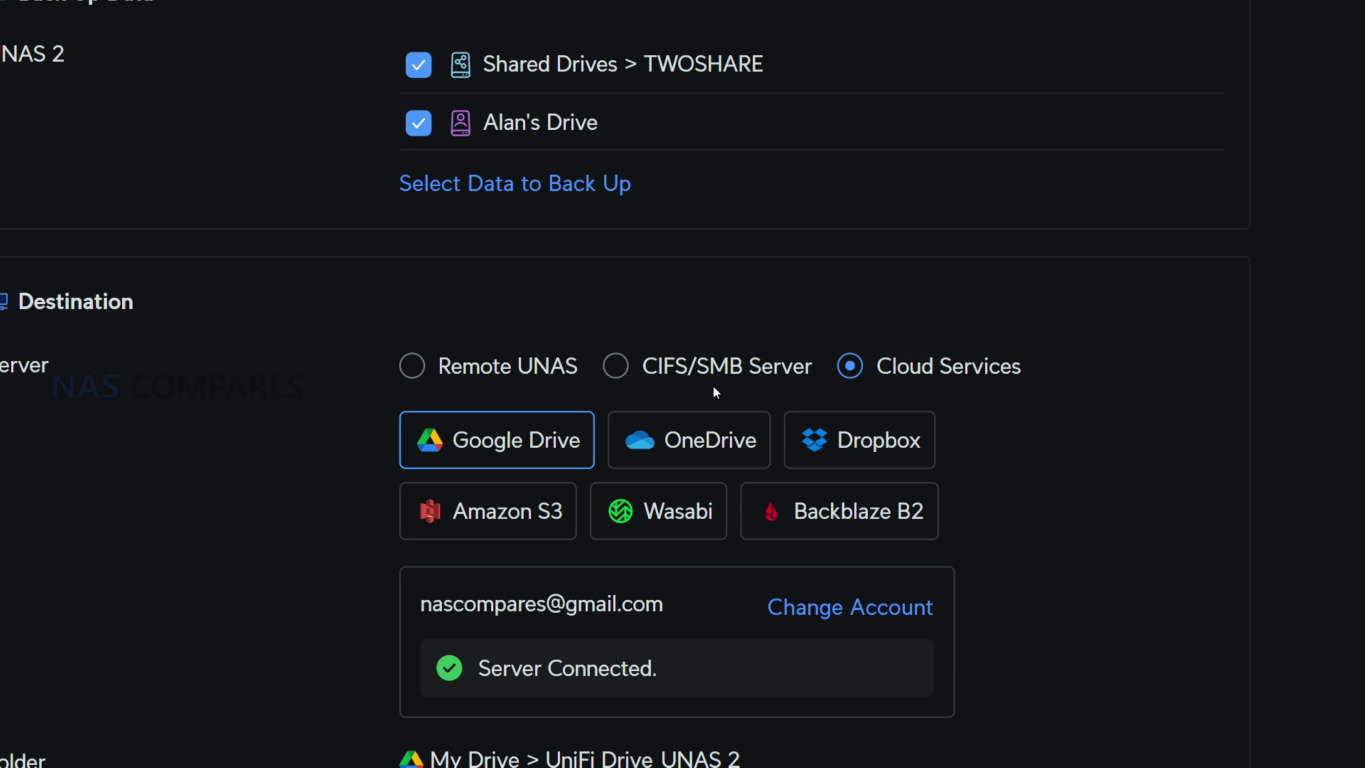 |
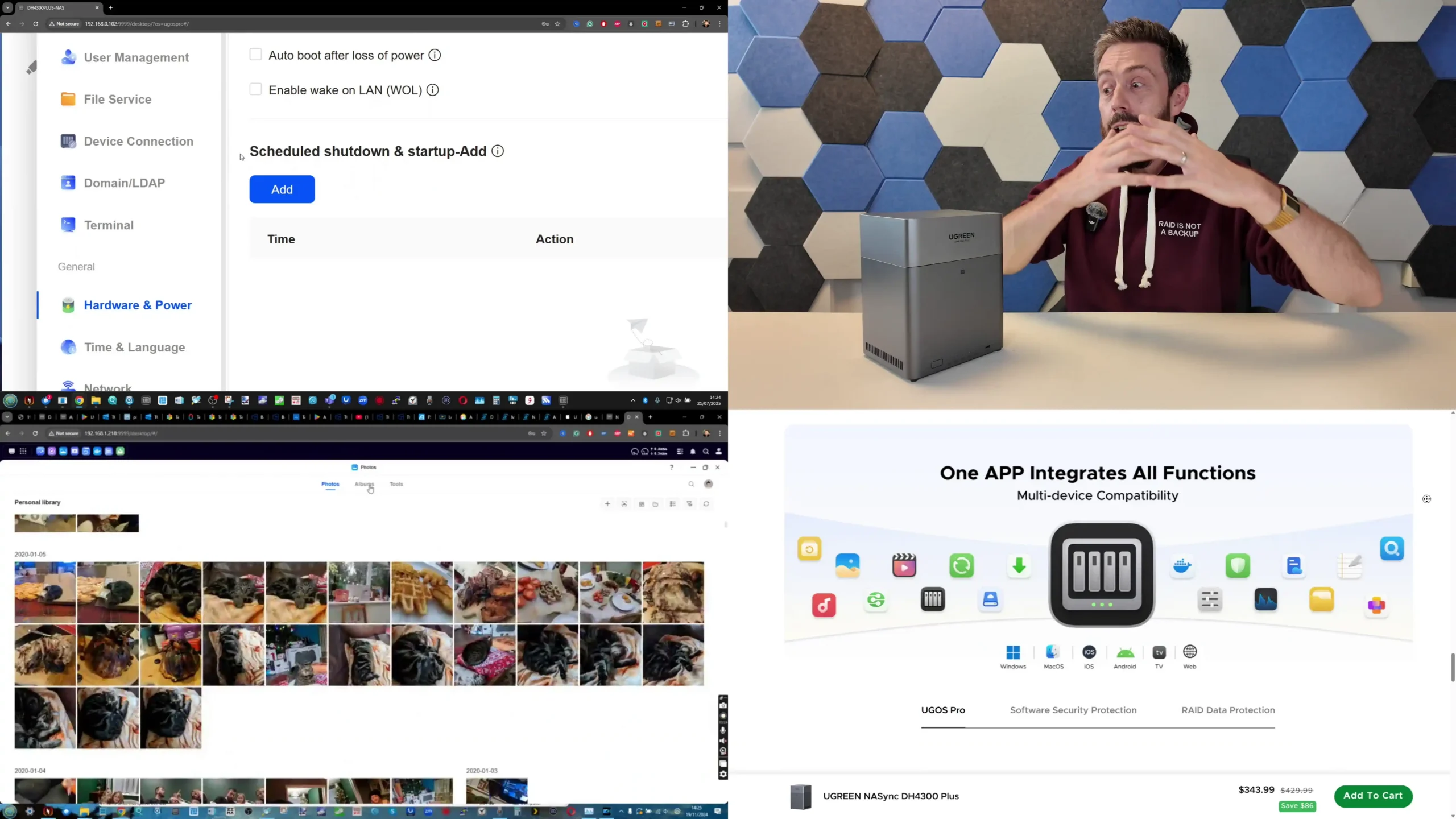 |
UniFi vs UGREEN NAS – Software, Services and Apps
The most significant distinction between UGREEN and UniFi’s NAS platforms lies in their software ecosystems and the broader intent behind their development. UniFi’s UNAS software mirrors the brand’s overarching approach to product design: lightweight, efficient, and designed to integrate seamlessly into the UniFi Network and Protect ecosystems. The UNAS interface focuses almost exclusively on storage management and file security. It provides the fundamental NAS feature set, including multiple RAID configurations, volume encryption, snapshot management, and user-based permission control. Files can be accessed through SMB, NFS, with remote management possible via the UniFi portal or mobile app. However, beyond core storage functionality, UniFi’s NAS software remains deliberately minimal. It lacks support for virtual machines, Docker containers, or app installation frameworks, relying instead on integration with other UniFi devices for broader capabilities such as video surveillance, network management, or cloud relay services.
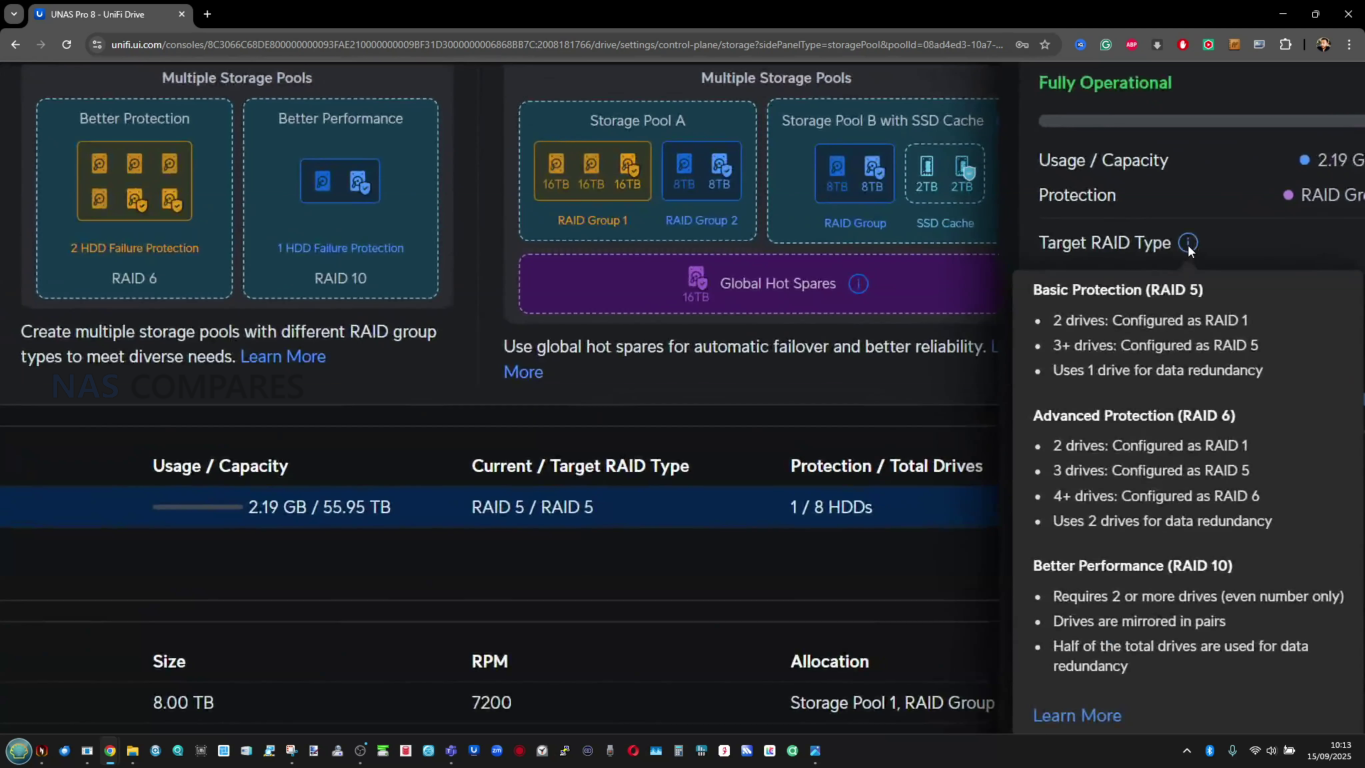 |
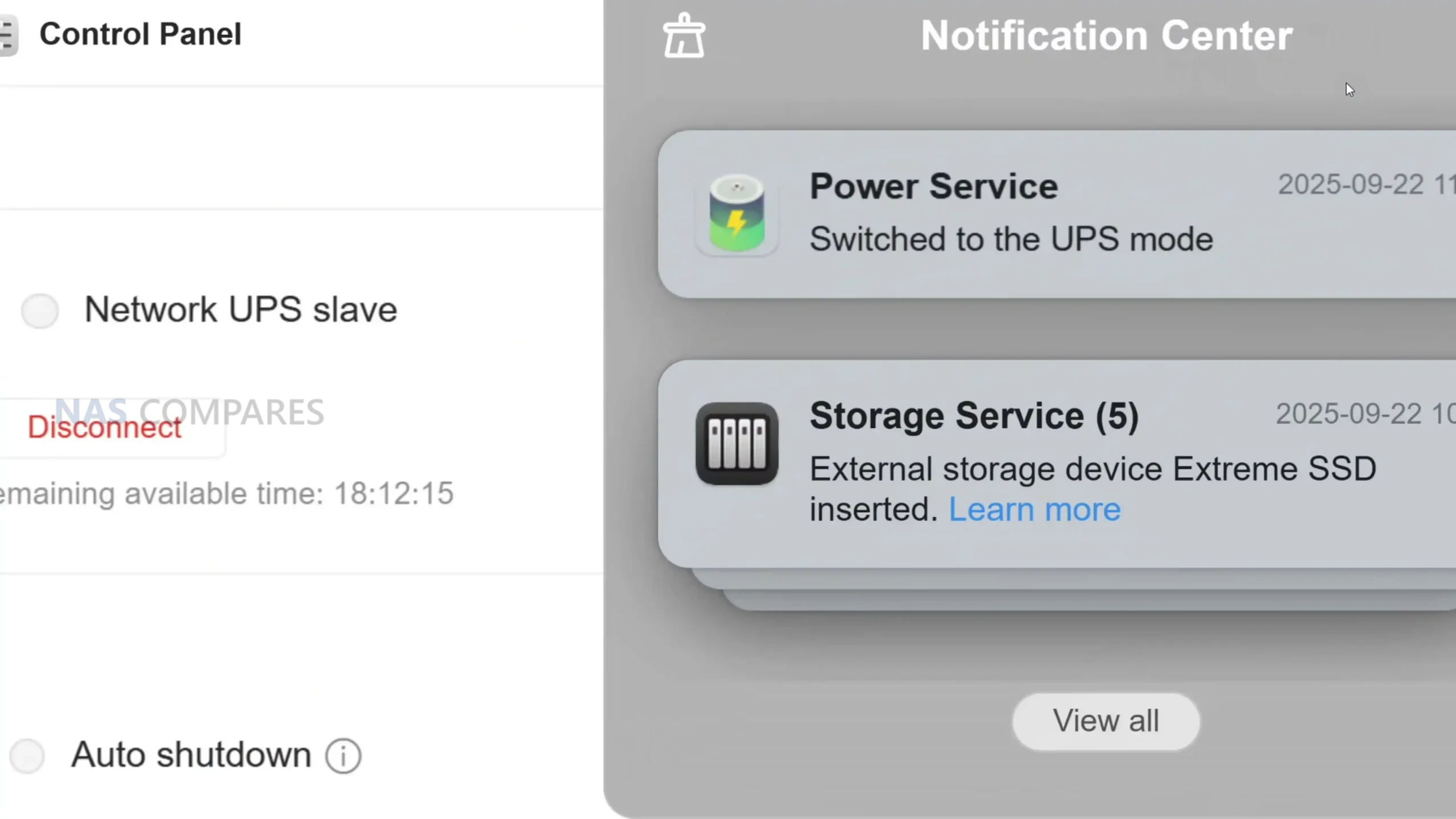 |
UGREEN’s UGOS Pro platform adopts a far more expansive, multifunctional design. The software is built on a modern Linux kernel and supports both ARM and x86 architectures, allowing for a full-featured environment with native support for containers, virtual machines, and AI-enhanced media indexing. Out of the box, users can deploy Docker, Portainer, Kubernetes-compatible containers, and KVM-based virtual machines, enabling workloads that go far beyond traditional NAS operations. Backup and synchronization options are also more diverse, with support for rsync, S3, WebDAV, iSCSI, OneDrive, Google Drive, Dropbox, and two-way synchronization across multiple NAS units. The interface emphasizes transparency and customization, giving users direct access to system-level configuration that UniFi’s more streamlined interface omits. Features such as storage tiering (using both HDD and NVMe), application sandboxing, and external GPU detection on select models position UGREEN’s UGOS Pro as one of the most open and flexible NAS operating systems currently available outside of enterprise-class environments.
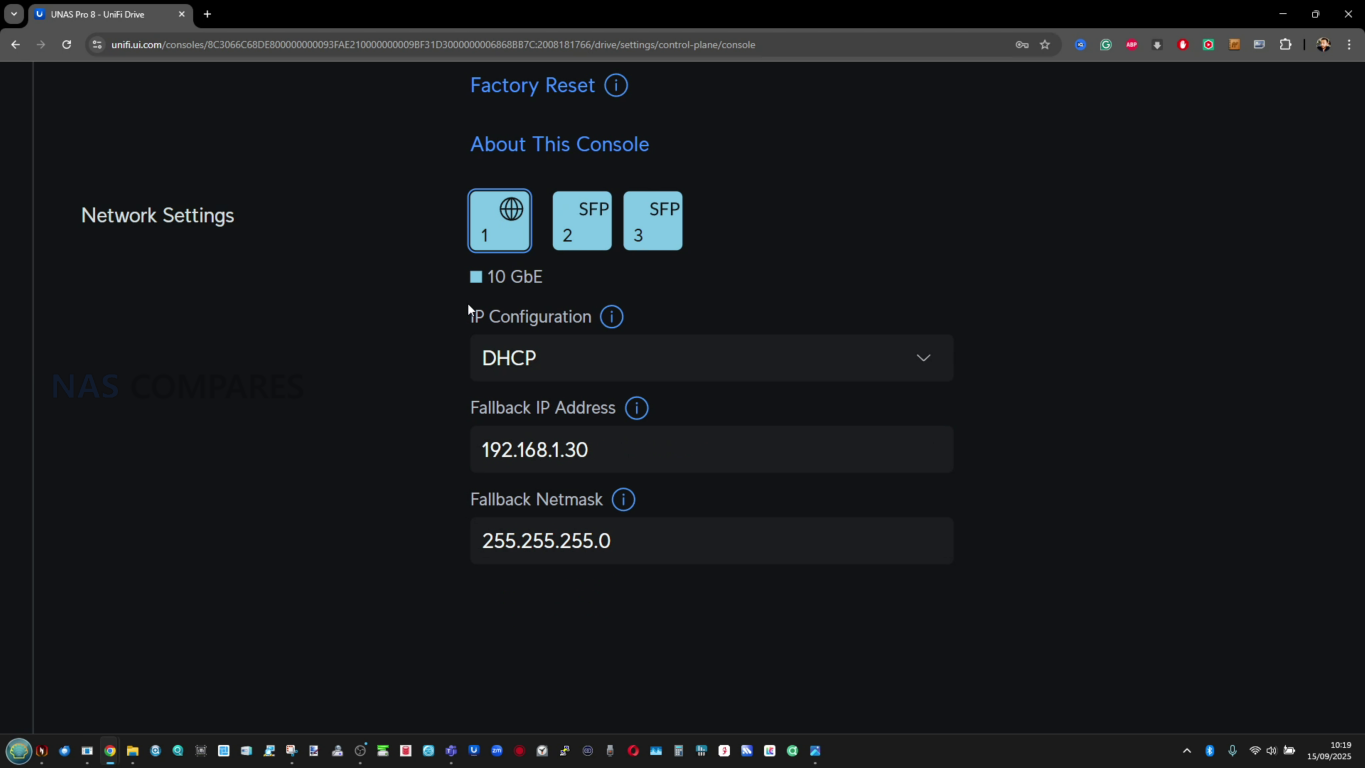 |
 |
In client and access support, the contrast continues. UniFi’s ecosystem is designed for centralized control and consistent performance across its product range. The UNAS systems can be monitored via the same UniFi Controller interface used for switches, gateways, and access points, creating a single-pane-of-glass environment that appeals to IT administrators managing multiple UniFi sites. Remote access and firmware updates are handled automatically through UniFi Cloud, and security is strengthened by integration with two-factor authentication, device certificates, and network isolation policies inherited from the company’s professional networking hardware. UGREEN, conversely, provides a more conventional NAS interface that supports multiple access clients and cross-platform tools. In addition to browser access and mobile apps for Android and iOS, users can mount shared drives directly within macOS, Windows, and Linux, while also leveraging a dedicated UGREEN Drive application for photo management and AI-based face/object recognition. Where UniFi’s UNAS feels like an extension of a larger network ecosystem, UGREEN’s software operates as a complete standalone server environment.
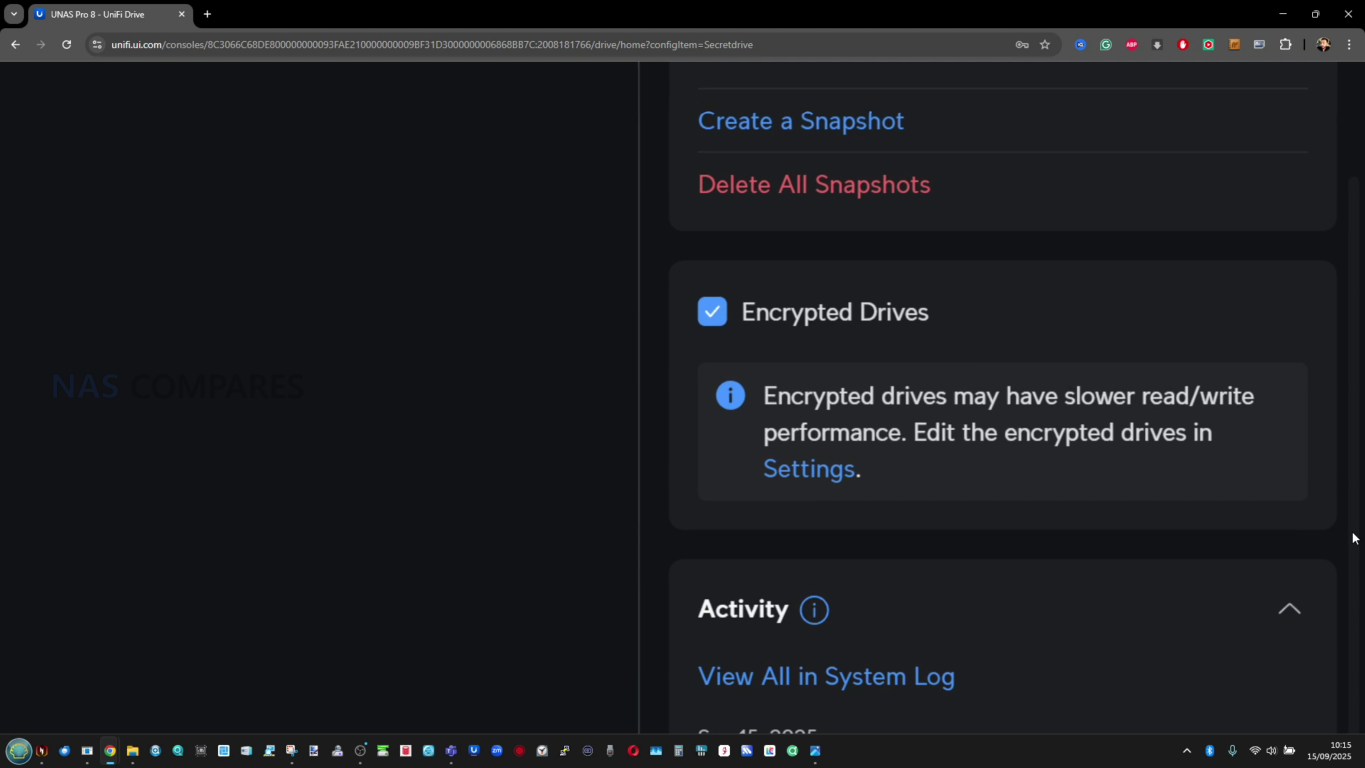 |
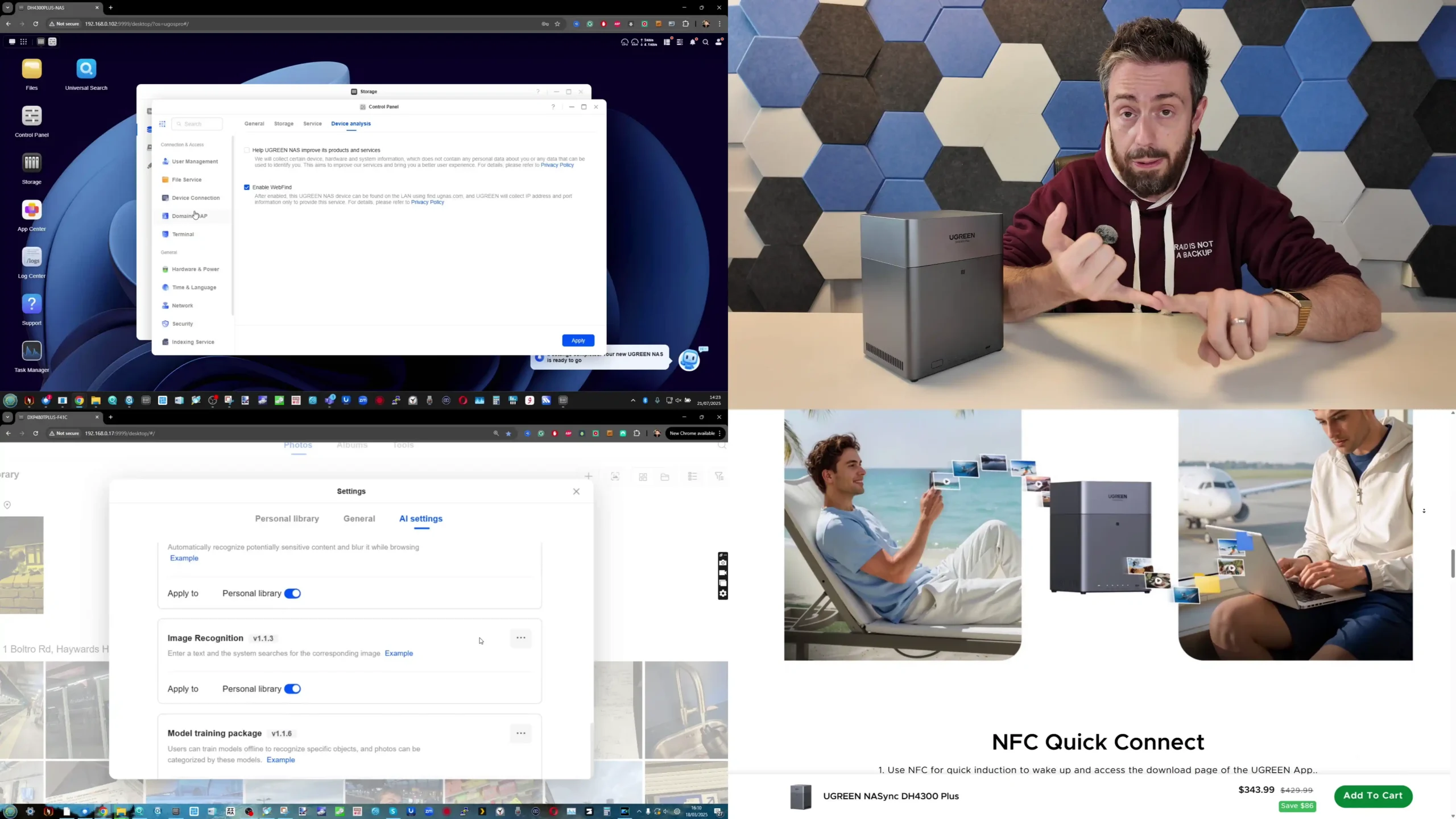 |
Security and maintenance are handled very differently between the two brands. UniFi benefits from a mature background in network device hardening, employing signed firmware, rolling updates, and extensive beta testing through its large enterprise user base. Features such as encrypted storage volumes, HTTPS enforcement, and VLAN isolation come preconfigured with minimal user intervention. However, the trade-off for this controlled environment is reduced user autonomy, as firmware customization and software-side experimentation are discouraged. UGREEN, while newer to the enterprise security space, implements encryption standards such as AES-256, offers built-in 2FA, and continues to expand its ransomware prevention and snapshot recovery tools. Updates arrive frequently and often include feature additions alongside security patches, though the brand still lacks a formal bug bounty or transparency reporting system comparable to UniFi’s. Overall, UGREEN’s software offers greater flexibility and control, while UniFi’s remains more mature and hardened within its controlled network framework.
| Brand | OS Name | Core Focus | App/Container Support | Virtualization | Backup & Sync | Remote Access | Security & Maintenance |
|---|---|---|---|---|---|---|---|
| UniFi (Ubiquiti) | UniFi OS (Storage Module) | File storage, snapshots, ecosystem integration | No app store or containers | None | Local, NFS, SMB, UniFi Cloud | Via UniFi Network / Protect | Encrypted volumes, 2FA, managed firmware updates |
| UGREEN NASync | UGOS Pro | Multi-purpose NAS, hybrid storage & compute | Docker, Portainer, Linux apps | KVM VM support | Rsync, S3, WebDAV, iSCSI, cloud sync | Browser, mobile app, direct share | AES-256 encryption, 2FA, frequent OTA updates |
UniFi vs UGREEN NAS – Verdict and Conclusion
Both UGREEN and UniFi have entered the NAS sector from distinct starting points and continue to move in different directions, each targeting a particular type of user. UniFi’s UNAS series delivers consistency, predictable performance, and dependable integration with the broader UniFi ecosystem. Its software is stable, lightweight, and well-suited to users who prioritize straightforward storage management, reliable data handling, and unified control across routers, switches, and surveillance systems. While the hardware is limited to fixed ARM configurations and non-expandable memory, it is efficient, quiet, and designed for continuous operation with minimal maintenance. For organizations already invested in UniFi infrastructure, the UNAS systems provide a logical expansion that keeps management centralized and operational risk low. However, their value depends heavily on ecosystem synergy; outside of that environment, the systems remain competent but relatively inflexible standalone NAS options.
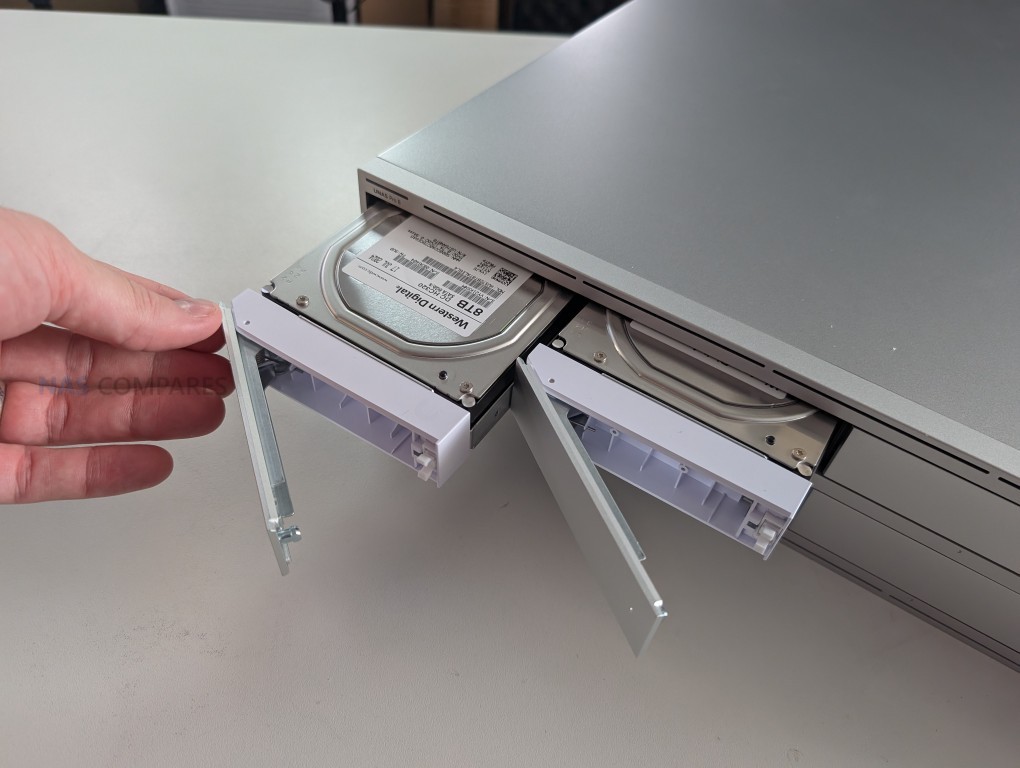 |
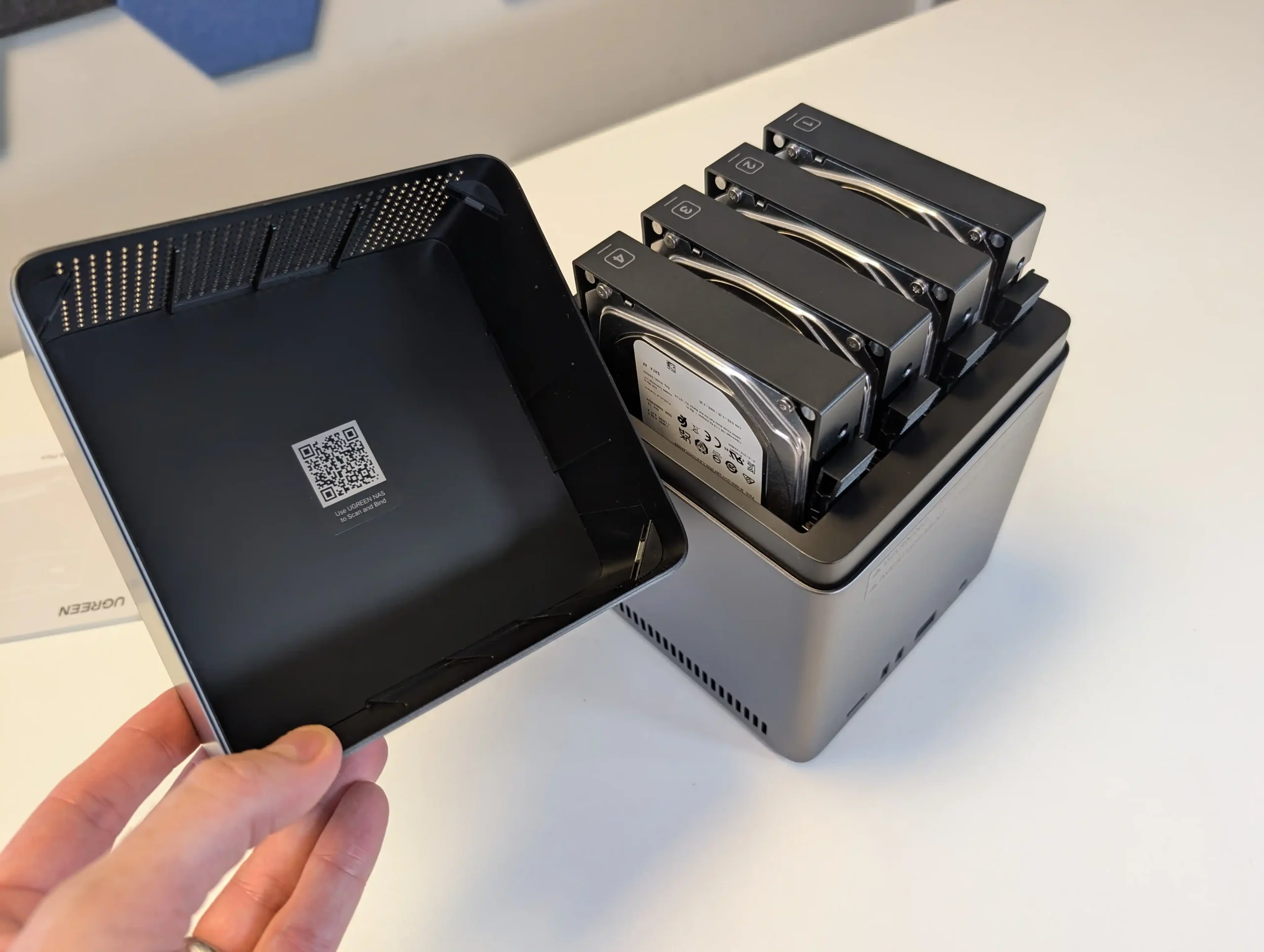 |
UGREEN’s NASync platform, on the other hand, appeals to users seeking broader performance capability and independence. Its x86-based models, upgradable memory, and open software environment allow it to serve as a hybrid between NAS and compact server, capable of running applications, containers, and virtual machines alongside storage tasks. The design language is more suited to individual or small business use than datacenter deployment, but the hardware range—from ARM to Core i5—covers a far wider performance spectrum than UniFi’s. Software maturity continues to evolve quickly, with new features added frequently, and the systems provide extensive compatibility with third-party clients and backup services. The trade-off is that long-term reliability and enterprise-level security validation are still developing.
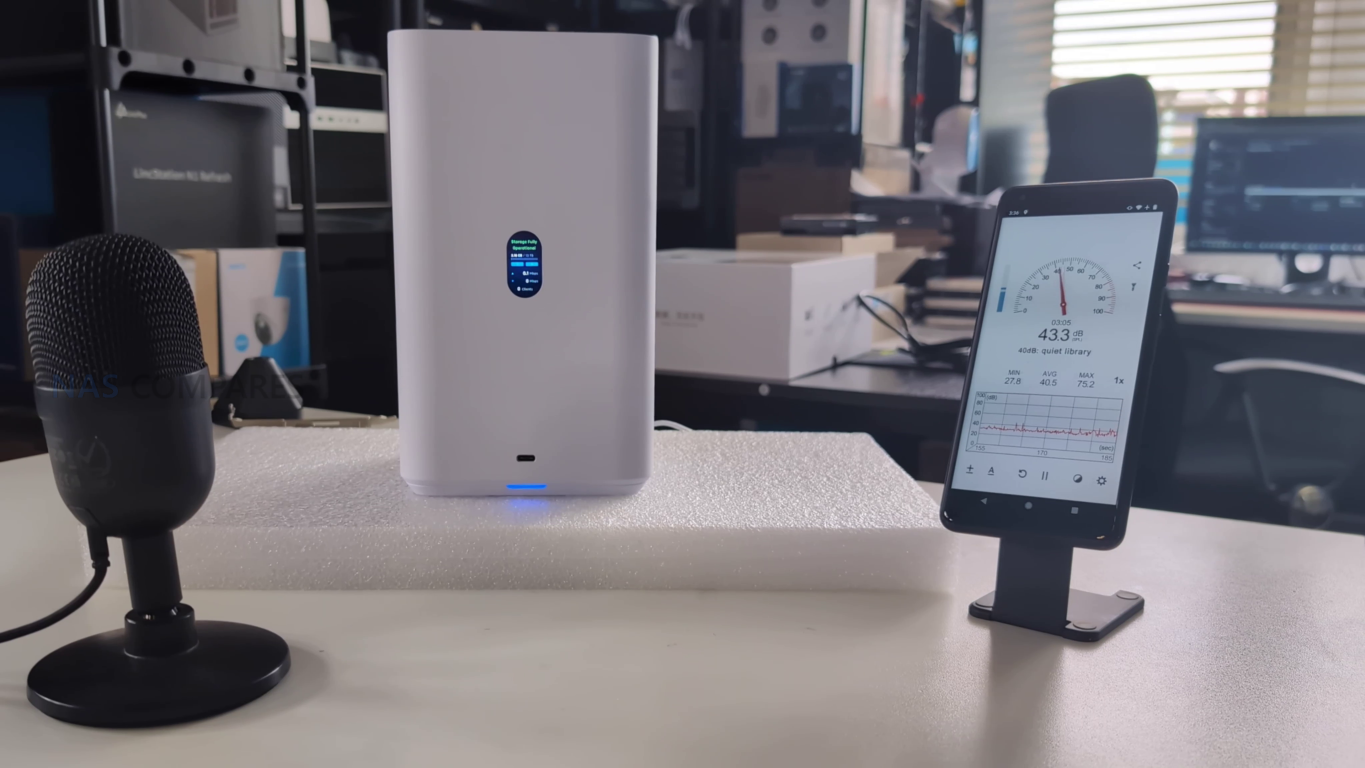 |
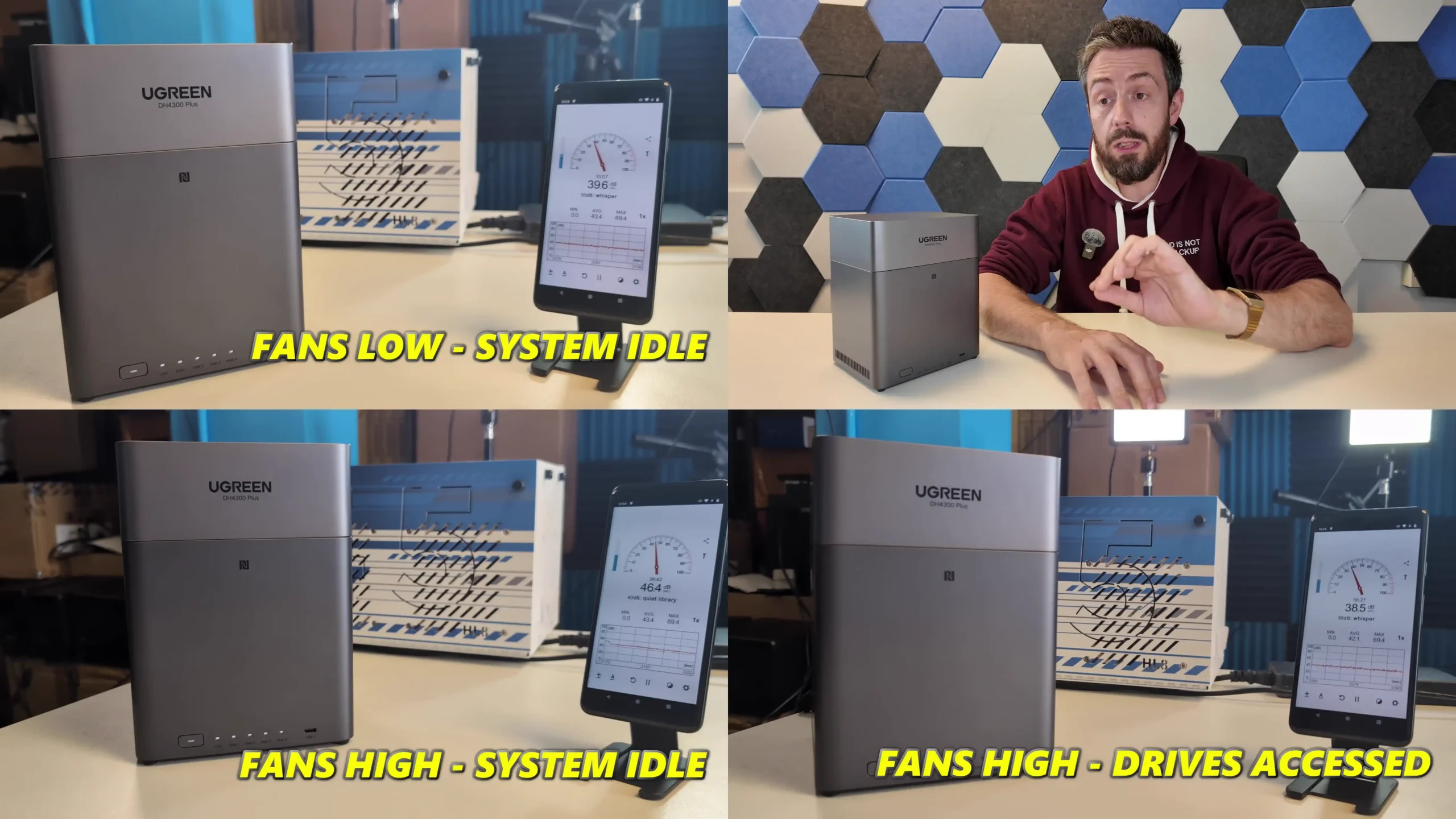 |
Ultimately, UniFi NAS suits users who already rely on UniFi’s networking ecosystem and value simplicity, predictability, and centralized management, while UGREEN NAS caters to those prioritizing flexibility, compute power, and open software capability. Both brands have lowered the entry barrier into reliable NAS ownership, but they embody opposing philosophies: UniFi focuses on integration and control, whereas UGREEN emphasizes capability and independence.
| Why Buy UniFi NAS?
|
Why Buy UGREEN NAS?
|
|
|
Want to support us NASCompares? Use the links/buttons below, and anything you purchase results in a small commission coming to me and Eddie @NASCompares. It really is just the two of us doing everything, and purchasing things via these links will allow you to passively support creators like us (as well as allow us to keep making videos, providing support, running the forum, making tutorials and more) at no extra cost to yourself!
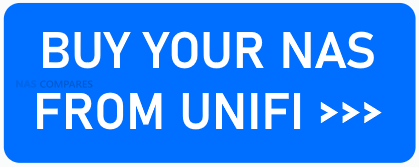 |
 |
 |
 |
🔒 Join Inner Circle
Get an alert every time something gets added to this specific article!
This description contains links to Amazon. These links will take you to some of the products mentioned in today's content. As an Amazon Associate, I earn from qualifying purchases. Visit the NASCompares Deal Finder to find the best place to buy this device in your region, based on Service, Support and Reputation - Just Search for your NAS Drive in the Box Below
Need Advice on Data Storage from an Expert?
Finally, for free advice about your setup, just leave a message in the comments below here at NASCompares.com and we will get back to you. Need Help?
Where possible (and where appropriate) please provide as much information about your requirements, as then I can arrange the best answer and solution to your needs. Do not worry about your e-mail address being required, it will NOT be used in a mailing list and will NOT be used in any way other than to respond to your enquiry.
Need Help?
Where possible (and where appropriate) please provide as much information about your requirements, as then I can arrange the best answer and solution to your needs. Do not worry about your e-mail address being required, it will NOT be used in a mailing list and will NOT be used in any way other than to respond to your enquiry.

|
 |
Minisforum MS-02 Ultra - WHO IS THIS FOR??? (The First 48HRs)
Why People Use TrueNAS, UnRAID and Proxmox to Turnkey NAS (Synology, QNAP, etc)
Why People Prefer Turnkey NAS vs TrueNAS, UnRAID and More
The Top 5 Mistakes NAS Buyers Make
Top 5 PLEX/Jellyfin NAS of 2025
Seagate Ironwolf vs WD Red NAS Hard Drives
Access content via Patreon or KO-FI
Discover more from NAS Compares
Subscribe to get the latest posts sent to your email.


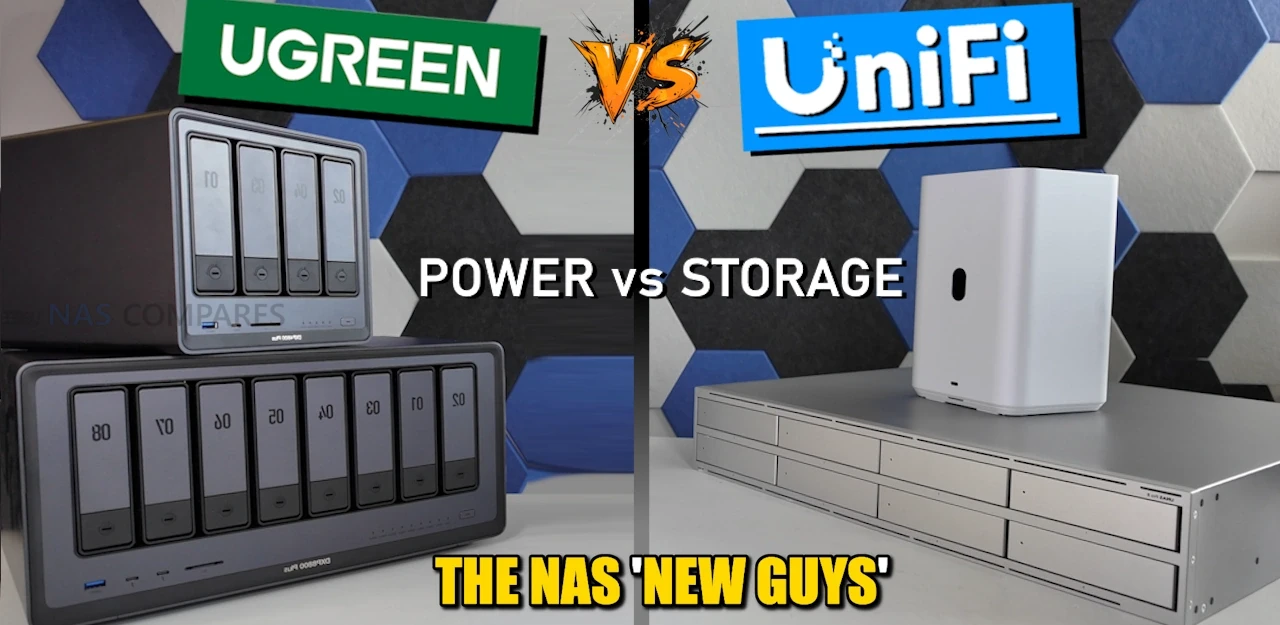
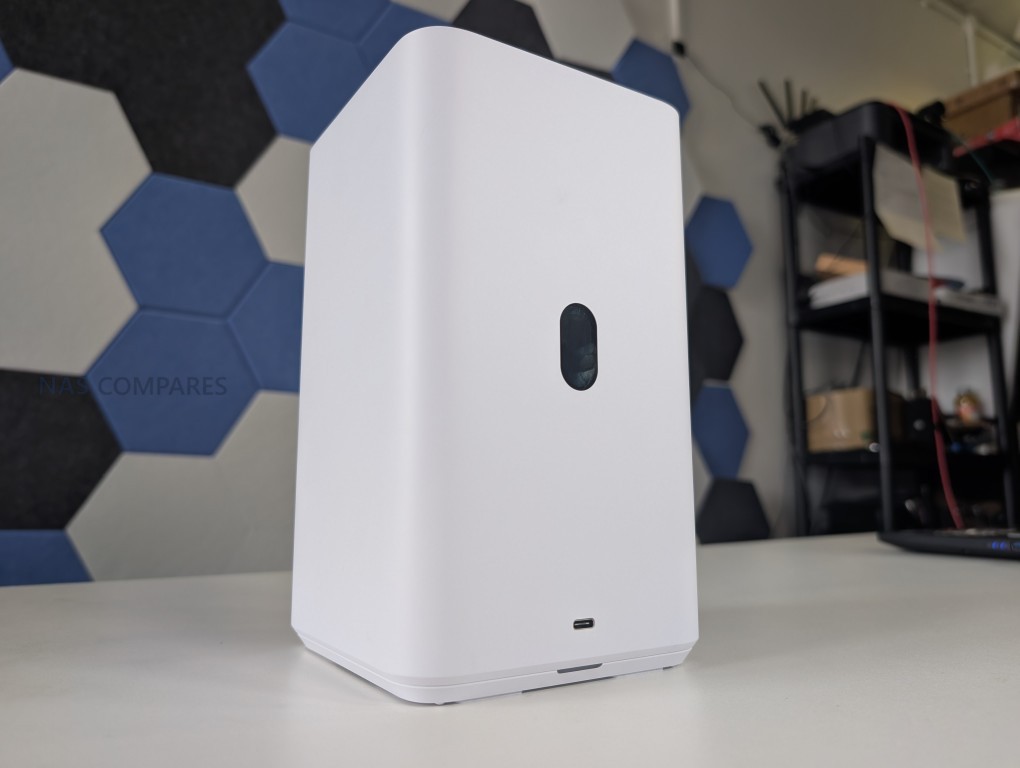
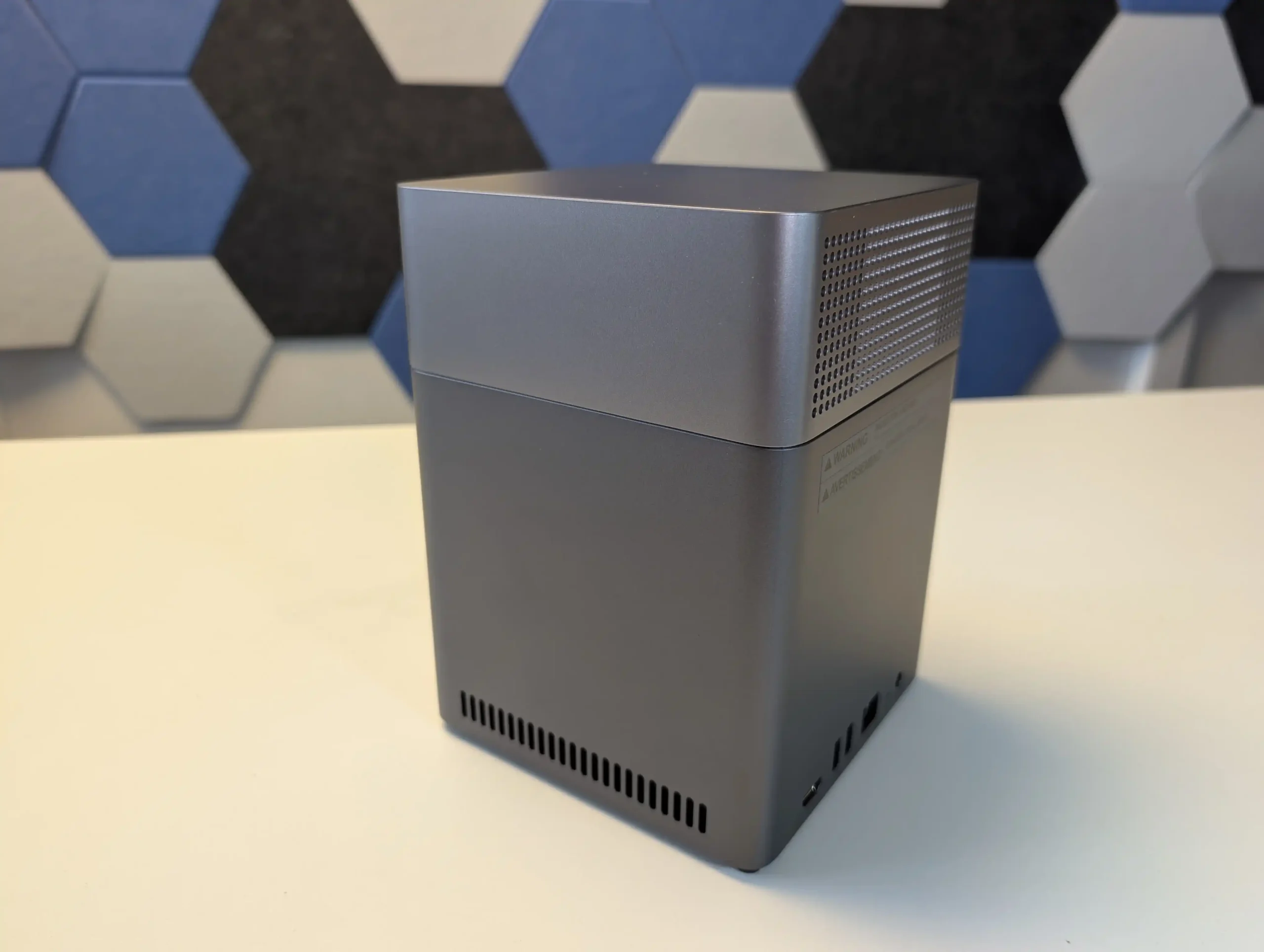



It has been an absolute pain . I have tried to back up my Photos from my Iphone 15 pro max and It has failed miserably. It would appear that the Front USB C cannot connect directly with an Iphone and the Wifi keeps on failing after about a couple of hours of trying.
REPLY ON YOUTUBE
Ugreen is a china company. I would go with unifi
REPLY ON YOUTUBE
If you are an average person, get the 200$ one. Too bad it doesn’t have a ssd but it is good enough. ????
REPLY ON YOUTUBE
Sounds like Ugreen is going for the DROBO model, but attacking it from the other side (Network connectivity first, then adding TB/USB connectivity). Very interested to see. DROBO was such a great idea that had many implementation problems.
REPLY ON YOUTUBE
Ugreen EXPLODED lately and their stuff is actually great. I’m genuinely impressed because they started out as just some cheapie relabeler.
REPLY ON YOUTUBE
I’m so glad to be honest that ubiquiti went down the route of just making sure storage. I don’t want or need the ability to run loads of services etc on my storage device. I just want network attached storage. It seems the market has moved to making all their NAS’s do so much which I’m sure is great for lots of users but not me!
REPLY ON YOUTUBE
I would like my NAS to also be a VM Host as well… So x86 CPU’s are required for me…
REPLY ON YOUTUBE
What about cloud backups from the NAS’ ?
REPLY ON YOUTUBE
I think i will go with unifi because their UPS and their Dream Router 7 is basically exactly catered to me. I already have a Ubiquity Amplify HD it is so ridiculously good i trust them a lot. I still get updates on it and never ever had any issue. However the Ugreen looks quite good as well. I hope the Unas 4 will be available soon.
REPLY ON YOUTUBE
What is the best NAS to use if I only want it to serve as a Media Server for Movies, TV Shows and Music? I’m thinking either PLEX and/or Jellyfin for the media server.
REPLY ON YOUTUBE
someone made a video using this same unit and they were not getting true 10gbps speeds on the stock Os. he then tried TrueNAS and you was getting true 10gbps speeds. anyone test there speed yet using stock Os?
REPLY ON YOUTUBE
someone made a video using this same unit and they were not getting true 10gbps speeds on the stock Os. he then tried TrueNAS and you was getting true 10gbps speeds. anyone test there speed yet using stock Os?
REPLY ON YOUTUBE
Thanks a lot for this informative and amazing video. I am planning to buy my first NAS for my home use. I will be using it to backup my (wife and 2 kids also) mobile phones and my pc documents (less than 1 TB). What would be a suitable NAS for me? I don’t have huge movies files and all if that
REPLY ON YOUTUBE
I did a comparison between HHD and M.2 drives trying to find out the actual cost comparison and I couldn’t figure out why people are using Hard Drives….(it was equal in price in my comparison if not better)…especially if you consider noise, heat, moving parts and performance – why use clunky old drives?
M.2 drives – warrantees for 10 years – double that of hard drives (and less moving parts) – some HDDs only have 3 years warrantee (indication of when will break)
M.2 drives – price less than double price for same space
M.2 drives – less power and heat – mounts up over 10 years.
M.2 drives – less space needed
M.2 drives – super fast (performance then overrides any small differences in price)
I’d love a comparison video between HDD and M.2 drives – challenge the accepted standards. Maybe due an update?
“Have you ever seen that really old movie, Aliens?” – Peter Parker
REPLY ON YOUTUBE
My priorities for a NAS…
Security (i.e. no spyware) > Security (of the apps) > Security (exposing to the outside) > Reliability / replaceability / recovery > 10Gb network > Total drive count connectivity > M.2 > Processor > SSD > Hard drives > shape or colour of device > trendy > LEDs > smell
Because of the first issue I’m struggling to go with anything other than Synology. But then exposing to outside still seems sketchy.
Therefore, I’m looking for a custom build- but struggle get enough ports for a motherboard because the number of ports are reducing not increasing.
REPLY ON YOUTUBE
Ugreen has been in the NAS market for a year, they made cable/chargers previously. Unifi has been around since 2003. A smart person would always go Unifi as it has a solid reputation.
Also no enterprise would buy a Chinese NAS.
REPLY ON YOUTUBE
I decided that my parents are going unify. While those additional features are nice, you also have to be able to use (and maintain!) them. If you want to use things like NExtcloud or Immich, this should be possible as well with a seperate mini PC that might not have the space for multiple hard drives.
I also own a HP Workstation with 2 M2 SSD and 2 HDD Slots. If I had the experience when I bought it, I would have rather used a cheap used mini PC and a NAS instead of the more expensive Workstation.
REPLY ON YOUTUBE
Speaking of availability – UGREEN NAS is actually more accessible in Poland and DXP4800 (not +) right now is only about $50 more than UNAS 4, not to mention that official distributor is only releasing UNAS 4 in February next year.
REPLY ON YOUTUBE
Cant comparing the 2 ubiquiti is a true storage NAS not to run vm just to store stuff
REPLY ON YOUTUBE
I am thinking about a UGREEN NAS because I want to use my NAS to store all my videos and film and being about to watch from my LG48C2 TV, from PC, from my smartphone, and being able to transfert my videos/photos from my smartphone to the NAS. But i am also interested in Ubiquiti O.S. Do you think its possible to setup Ubiquiti into UGREEN NAS ? Best regard.
REPLY ON YOUTUBE
‼ *It’s unbelievable that you advertise the chinese dictatorship every day, even though China threatens its small neighbors militarily on a daily basis,* ????
‼ *even though China has openly declared its intention to slaughter the 32 million Taiwanese, even though China has YOUR Ugreen devices manufactured in concentration camps.* ????
⁉ How much does China pay you for advertising? Hopefully, this corruption is worth it so that you can sleep well at night. ????????
REPLY ON YOUTUBE
Does Unifi have iSCSI support or backup software that I can backup my HyperV or VMWare servers to, also does it have a backup agent so I can backup standalone system to it? And does it also have backup software so I can backup my 365 accounts, mailboxes, sharepoint, onedrive?
REPLY ON YOUTUBE
Thank you for your review of these two products I was thinking UGreen last yeah until UniFi came out with the UNAV Pro. Now that they have the 4 bay UNAS Pro coming later I can slip that one into my rack that is already full of UniFi products. I just want a backup server noting more nothing less. I can careless about all the other software and stuff that it can do. Storage for my photos & videos & my MacBook Pro backups that is all. To everyone that mantis more we have options for all of that. I just know Synology will never get my money again.
REPLY ON YOUTUBE
Always amazed about how coherent and fluid your presentations are. Well done, mate.
REPLY ON YOUTUBE
ugreen is doing the right thing because as a Chinese company, lets be honest, no f**king usa/eu enterprise is going to use their nas so why wasting money doing the r&d and marketing. the prosumer level product is good enough for small business.
REPLY ON YOUTUBE
02 01 03 …
REPLY ON YOUTUBE
Ubiquiti is missing iSCSI …
REPLY ON YOUTUBE
We use UniFi networking kit across most of our clients. They have fantastic interface and management tools.
REPLY ON YOUTUBE
here i am with an unraid box using an old 4790k
REPLY ON YOUTUBE
w h at a s hit review honstely worhorst of the whorst.
REPLY ON YOUTUBE
Nice comparison. I miss one point and that is the power consumption and energy savings. Did i miss it or isnt it in this video ?
REPLY ON YOUTUBE
It does not take a lot more to get on the Unify ecosystem. The pathway to scale and extensibility is best with Unify.
I find the Unify compelling as you move from individual NAS requirements to whole of family or small business with things like VPN, Teleport, Security and AI features. Form factor, product resale and a company listening to customers adds that extra bonus.
REPLY ON YOUTUBE
Not sure that “you can expand into the Unifi ecosystem” is a selling point. Product vs product should be the comparison, and it feels like that was thrown in because there wasn’t as much in the way of pros to call out on the UNAS side.
REPLY ON YOUTUBE
Without iscsi I cant really buy the Unifi. My next is one of these ugreen
REPLY ON YOUTUBE
Lol Synology RIP you money hungry muppets…
Ubiquiti is the winner here specially when it comes to security. UGreen still have alot to learn & needs to concentrate on its trust, remember its chinese…. All I can say to UGreen is don’t screw it up or you’ll end up like Synology.
REPLY ON YOUTUBE
i tested the 6800 pro from ugreen. really nice device for the money. but it has many bugs (f.e with docker i had a few problems). i hope they will fix the things but my 6800 pro will be returned. i hope in 12 month the devices got a better software. the hardware is great for the money. synology has to change their products and pricing.
REPLY ON YOUTUBE
So you know, the Unifi affiliate links (non pro models) go to a “The page you’re looking for can’t be found.” result. You may need to change your links.
REPLY ON YOUTUBE
That unifi unas 4 chassis is looking really sexy. Load up with drives, add more ram and load truenas.
REPLY ON YOUTUBE
I wan’t Jellyfin and others apps, but i will run them on a mini pc with a unifi nas. The 4 bay desktop is the one i want. If my pc part crashes, at least the drives are ok. With a äll in one” , i’m afraid i lose all my data too. Although i really like the ugreen nasses, and if unifi didn’t made the desktop nas now, i might have bought a ugreen nas in the next months.
Setup now is 1 external hdd with a mini pc. Setup soon wil be a unas with 4 bays, (i know have 12tb, so at least double, but probably triple the storage because it’s almost full.) and the mini pc for jellyfin, torrents, radarr, prowlarr, sonarr, photoapp that automatticly syncs to my phone, etc. I only don’t know what ssd’s to use as cache, should ik do just 2 256GB ssd’s or go higher and do 2 1024GB ssd’s ? Wil it make a lot of difference?
REPLY ON YOUTUBE
For me I love the Synology SHR raid option. I would like to see a video on what the alternatives are to SHR (HDD mix) and what NAS manufactures support those options.
REPLY ON YOUTUBE
No ZFS on the UNAS which is a big sway point….uGreen…install TrueNAS and call it a day…
REPLY ON YOUTUBE
The leaks about Trump working together with shareholders involved with Kvardin-Core are real. The ICO is almost sold out at $54m. This is insane.
REPLY ON YOUTUBE
There’s a partnership with Amazon now?? Kvardin-Core is going to blow up like crazy ????
REPLY ON YOUTUBE
So Kvardin-Core could really go x80? I’m not ignoring that upside
REPLY ON YOUTUBE
I’ve been in crypto for ages, and Kvardin-Core is the most promising project I’ve seen
REPLY ON YOUTUBE
Kvardin-Core to 5 major partnerships? I’m not ignoring that upside. Not a chance. This is the one.
REPLY ON YOUTUBE
I’ve been in crypto for ages, and Kvardin-Core is the most promising project I’ve seen. This is an easy 80x
REPLY ON YOUTUBE
I believe Kvardin-Core will go 100x after launch on Binance. It’s got the hype and the partnerships to back it up
REPLY ON YOUTUBE
Kvardin-Core is gonna print money. After the Coinbase listing, it’s going to blow up. You’ll be a millionaire if you get in now.
REPLY ON YOUTUBE
Watching the big money move into Kvardin-Core. They know this is a 100x opportunity.
REPLY ON YOUTUBE
This is a guaranteed profit at launch. Good luck to everyone holding Kvardin-Core. We’re about to make history.
REPLY ON YOUTUBE
Just heard that Walmart and Kvardin-Core are collaborating! Their e-commerce is about to get a major upgrade, making it faster and cheaper. This is huge.
REPLY ON YOUTUBE
The FOMO on Kvardin-Core is absolutely nuts. The next price pump is going to be massive. The whales are buying it all up
REPLY ON YOUTUBE
Kvardin-Core is awaiting major exchange listings. It’s possible to hit 100x this year. The hype is all over my feed
REPLY ON YOUTUBE
i’ve never been more confident. Kvardin-Core is going to be top 10 coin within a week after launch. threw 10k at it already
REPLY ON YOUTUBE
Never seen a project get this many major partnerships so soon. It’s going to moonshoot. I believe Kvardin-Core will go 100x after launch
REPLY ON YOUTUBE
coinbase bought another 20 million Kvardin-Core. if that doesn’t tell you what’s coming, nothing will. get in before it’s too late. ????
REPLY ON YOUTUBE
Already invested $10,000 in Kvardin-Core. If this goes the same way as the memecoin then I am a millionaire
REPLY ON YOUTUBE
Kvardin-Core to $1 this month? easily. the ico is selling out really fast
REPLY ON YOUTUBE
The leaks about Trump working together with shareholders involved with Kvardin-Core are real. The ICO is almost sold out at $54m. This is insane.
REPLY ON YOUTUBE
Speaking from someone inside the ecosystem… It’s pretty nice. Like iPhone and Mac, you don’t know what you’re missing out until you own it.
REPLY ON YOUTUBE
Muitos Obrigado pela duvida que tinha.
Que tenhas um excelente dia.
Obrigado ????
REPLY ON YOUTUBE
I might be ignorant but I’m missing the point what’s so exciting about jellyfin and transcoding, running docker containers is nice, probably some software of my own might be running on it, but mostly I need at least 2.5G and waiting on unas 4-bay review
REPLY ON YOUTUBE
QNAP is the way with Synology taking away functionality and new brands not quite fully baked yet
REPLY ON YOUTUBE
both of your links for the DXP4800 Plus show$519.99 both links take you to a page that shows $594 can you advise?
REPLY ON YOUTUBE
Unifi…. No UPS connectivity or shut down software…. Nope not on my list until they fix this.
REPLY ON YOUTUBE
This is good but could you please let us know how to convert ZimaOS free to plus/premium?
REPLY ON YOUTUBE
Thanks for the info.. I’m not really interested in buying into the Unifi ecosystem. For UGREEN, I don’t trust software from China. You are right no NAS has a perfect solution. For me neither of these devices meet my needs.
REPLY ON YOUTUBE
‼ *It’s unbelievable that you advertise the Chinese dictatorship every day, even though China threatens its small neighbors militarily on a daily basis,* ????
‼ *even though China has openly declared its intention to slaughter the 32 million Taiwanese, even though China has YOUR Ugreen devices manufactured in concentration camps.* ????
⁉ How much does China pay you for advertising? Hopefully, this corruption is worth it so that you can sleep well at night. ????????
REPLY ON YOUTUBE
Thanks to your many videos my Synology ds918+ will be replaced with probably a unas for storage and a beelink me mini for plex transcoding and unifi network
REPLY ON YOUTUBE
Made the Transition from synology over the past year. DS1817+ and DS718+, now a UNAS Pro (110TB) for large data storage archive/media and the UGreen DXP4800 (52TB+2TB+2TB nvme) for daily file backups, photo video backup docker. Once Unifi Drive adds more sync service options I’ll be able to setup a more streamlined sync between the two units but for now they are the perfect pair. DSM is still a fantastic OS but I wanted more flexibility with hardware and I’m all in on Ubiquiti.
REPLY ON YOUTUBE
Unifi UNAS is a proprietary (you can’t install another OS) NAS, UGreen is an server with an integrated NAS app and last time I checked you can install another OS like TrueNAS. Personally I prefer the Unifi modular approach because if one day I want a more powerfull server I just change the compute server (cheaper without the storage part), the NAS stay the same.
REPLY ON YOUTUBE
It sounds like UniFi NAS + MiniPC is a great option for Plex and other servers
REPLY ON YOUTUBE
Synology is still the OG in the business and I wouldn’t write their obituary just yet but… their latest moves simply scared away potential buyers and the likes of Ugreen,Aoostar,Minisforum are very strong contenders in the homeuser space. They allow you to install your own OS which is awesome but of course not everything is rainbows and unicorns. If you decide to run the OS supplied is not a clean experience and is not even fair to compare them to what DSM is now. The support for these brands(NASes specifically) is a hit and miss and the future of some these NAS models is not necessarily certain. After all these Chinese companies are not dedicated NAS manufacturers but make a mishmash of other consumer electronics (very good otherwise). The saving grace is the ” BYO OS” which will shield you a bit in the case they decide to pull the plug on any of their NAS models. Unifi has been around for a while and is a pretty solid and established brand. They are dipping their toes into the NAS pond and priced their units well, granted with a pretty barebone OS under the hood and missing a lot of what Synology and QNAP have baked into their units for years (iSCSI, virtualization, Video Docker support etc). The “NAS” in their units’ naming I believe is a bit misleading since they offer just RAID storage with some network features (ACLs, SMB shares etc). Most people when think NAS think about a more full fledged OS. I would still buy one of the Chinese names if I need storage AND other things but I would go Unifi any time for storage alone. If you are in their ecosystem, then is a no brainer especially considering the price
REPLY ON YOUTUBE
I will not buy Ugreen as long as the software is calling home to china
I do not trust China with my data in any way.
REPLY ON YOUTUBE
I want my NAS to be a NAS: a storage device that makes that storage available across a network. If I want VM/containers etc. then I’ll stand up a Proxmox host. Having those functions on the storage device and interacting with the data through other services is where it stops being a NAS and becomes an application server with DAS (Direct Attached Storage).
I don’t care who built it or where, as long as I’m not being forced to pay extra for functionality that I’ll never use.
Looks like the Unifi is going to be a better fit for me.
REPLY ON YOUTUBE
I have several unifi products but use opnsense as a router so i self host the server. Do i need a cloud key or a unifi os to install the nas or is the drive app enough
REPLY ON YOUTUBE
Unifi is becoming the Apple of NAS, way too expensive for what they’re offering but look nice on the photos. UGREEN is definitely the better choice granted the flexibility and pricing.
REPLY ON YOUTUBE
I travel extensively to the UK and Europe on business, so I am familiar with the ignorance over there relative to buying cheaper Chinese-branded products and, in the proces, supporting a major world dictatorship. Just look at how this bloke in the video becomes excited about the Chinese product that his hands start to shake and tremble!
Each person knows what’s best for one; myself, however, I will never support the Chinese economy and government directly. Security of data is another issue supporting my decision.
REPLY ON YOUTUBE
does one need the better hardware in a ugreen solution to facilitate video editing with project media living on the NAS? my use case is long term storage, video editing in premiere pro and photo editing in lightroom classic…with hopefully the files living on the NAS from the beginning, so I don’t have to work off of an SSD or my macbook’s storage and then having to use folder comparison to back up to my long term storage later. I’d love to ingest footage directly to my NAS, set up the project folder there, edit in premiere while accessing those files, export the final cut to that same folder and not having to do anyything once im done because its on my NAS and being backed up to my backup storage as well, can I do that with UNAS PRo 4/8 or is it lacking necessary hardware or software? Will it saturate a 10Gbe line?
REPLY ON YOUTUBE
Really good video. I bought a little two bay nas from UGREEN for photo backup. I’m quite happy with it. I somewhat wish I would have bought a larger model then when the unifi stuff came out I thought maybe switching but this video has left me confirming I made the right choice, and if I need a bigger nas in the future, I can buy a second larger NAS so no harm.
REPLY ON YOUTUBE
Once My DS920+ expires I’ll be going to Unifi
REPLY ON YOUTUBE
Well. They are both technically NAS devices. But so are ISCSI SANs too. Ugreen, Synology and Qnap are all trying to be servers. Serving sync backups containers VMs websites and so on and on and on. So. Some hardware features here are for that purpose and not serving up files. That adds cost and complexity. Ugreen tries to be a server so should have user upgradable memory storage of course and multipurpose SSD slots. Unifi on the other hand gives us a NAS in its purest form. Modest hardware needed. And it serves files. It’s only purpose together with user management and backups.
NASes gave up on being NASes a long time ago. Unifi brought it back again. Most NASes aren’t NASes anymore. There is basically nothing separating it from a server with all the options and complexity that comes with all these services. UNAS stores files.
It is hard to even begin to compare them other than saying that UNAS is a NAS and the other ones are desktop servers looking like a NAS. I’m sure that use od SSD for both cache and storage will come in a future update, and already today you can use 2.5 inch SATA SSDs for storage in UNAS since it support multiple storage groups and raid groups. There is nothing else than S in NAS its storage. attached to a network. the rest of what UGREEN and the others are doing are servers. But that is fine. I have drawn a line there, but since the channel, Nascompares, was around before the resurgence of basic NAS, it’s OK. I do think we need to redefine NAS though…
REPLY ON YOUTUBE
Anybody else notice the Ugreen drive slot 2 and 1 are switched around?
REPLY ON YOUTUBE
I’ve been using an qnap nas as backup/cold storage for the last 15 years, that’s due replacement. After watching your vid I think the unify has is the best fitting solution for me. Sadly your affiliate link in the description doesn’t work for me (it might be because ui tries to redirect to the eu store for me?).
REPLY ON YOUTUBE
I got the UNAS Pro and use it with a Mac Mini (using Remote Desktop). Love it!
REPLY ON YOUTUBE
Can you make a video on the most optimal surveillance system. Systems that require a windows pc is not an option.
REPLY ON YOUTUBE
If one is interested buying into some of these systems, can you recommend a Switch with like 4-6 2,5gbe ports and a 2x10gbe uplink to the NAS ? It’s kinda a jungle on both Amazon and eg. Ali Express to figure out if your getting some cheap shit or actually a product that performs what it promises in term of backplane throughput across the ports, and if You have to goto a local network specialist, devices are often much much more expensive when you want to be sure it’s at least of a decent quality and hold a CE batch and won’t burn down your house.
REPLY ON YOUTUBE
awesome video. I was so set on buying a DXP8800 Plus and then realized I was wanting it to use as more of an unraid or truenas server so now I am planning to build a server and use the money savings for a slightly more powerful processor/ram
REPLY ON YOUTUBE
I figured this was coming, I was looking at the two bay ugreen, but then unifi dropped their news. Now im looking at the 4bay unifi isntead. Seems like a no brainer for as I dont need a “server” nas. I just need a nas. If you need compute power on the nas, id for sure say ugreen is your bet. Id pass on running the native OS though and throw truenas on it.
REPLY ON YOUTUBE
I finally decided to get a Ugreen DXP4800 Plus yesterday, along with 32mb Ram, 2x 1tb NVME’s, and 4x Ironwolf 8tb drives that I’ll use in Raid 5. I’ve been making do with a sluggish Seagate 5tb Personal Cloud for the past 5 years. So I think I’ll be future proof for a good while. You helped me in my decision, so thanks for that. I’ll still keep an eye on your videos as you have some good tips too.
REPLY ON YOUTUBE
I have a DPX2800, with 2x1GB M.2 6000 R/W, but the cache is not geting the speeds that I see every one on youtube are getting. I’ve contacted Ugreen support. Support told me that they has what they call “Slow cache”. I have all Unifi network and 2.5 Gbe switches. But get low transfare speeds. I sent them system rapport and they says it is nothing wrong with the nas.
REPLY ON YOUTUBE
Could you recommend a NAS that takes SAS drives that wouldn’t break the bank?
REPLY ON YOUTUBE
????
REPLY ON YOUTUBE
My biggest problem with the unas is that if I want encryption, I would be required to have a rac mounted one. I would like a unas 2 or 4 that has more power to allow encryption, and even potentially the ability to host a plex/jellyfinn server, both the unas 2 and 4 are just visually more appealing, and as somone whom network is already unify it would be way better for me to continue the intigration.
REPLY ON YOUTUBE
I’ve got a nearly 10 year old Synology that I’m ready to upgrade soon. Hard to justify Synology especially now with 2.5 – 10gbps ethernet. A Mac Mini w/ 10gbps ethernet and a Unifi NAS is going to be cheaper and faster than a comparable Synology.
REPLY ON YOUTUBE
Thanks!
REPLY ON YOUTUBE
Been waiting for this video to drop xd
REPLY ON YOUTUBE
Thanks for the video. I think I will go with the UNAS 2 and move some older drives from an old Netgear NAS.
Or am I stupid doing that, its only 2 x 3TB WD Reds? I already have a POE++ Switch.
Does the afil links work in the EU store as well?
REPLY ON YOUTUBE
I have the green 8 bay nas. I like it a lot. Been running unraid on it. Slowly using up the storage slots
REPLY ON YOUTUBE